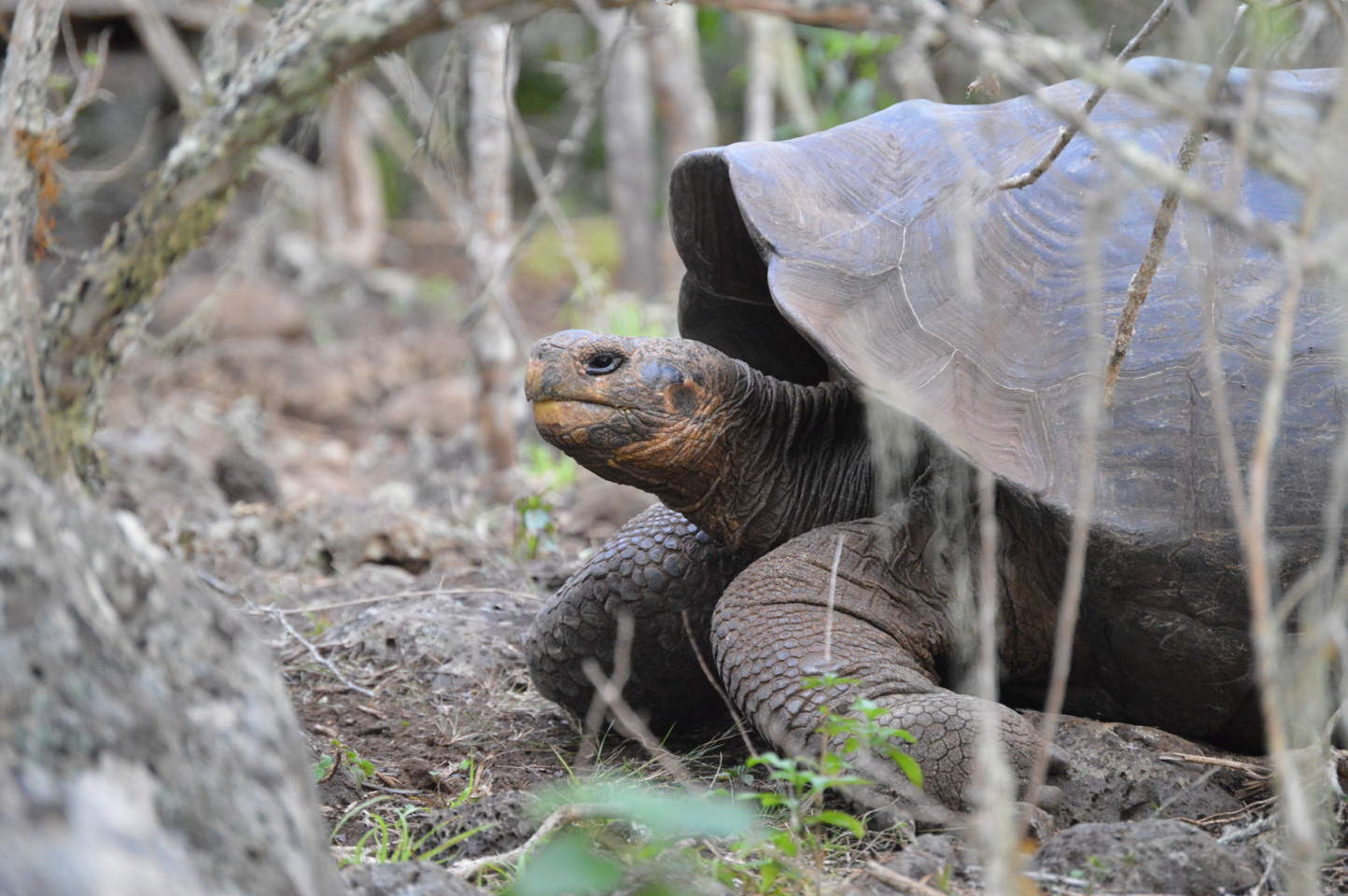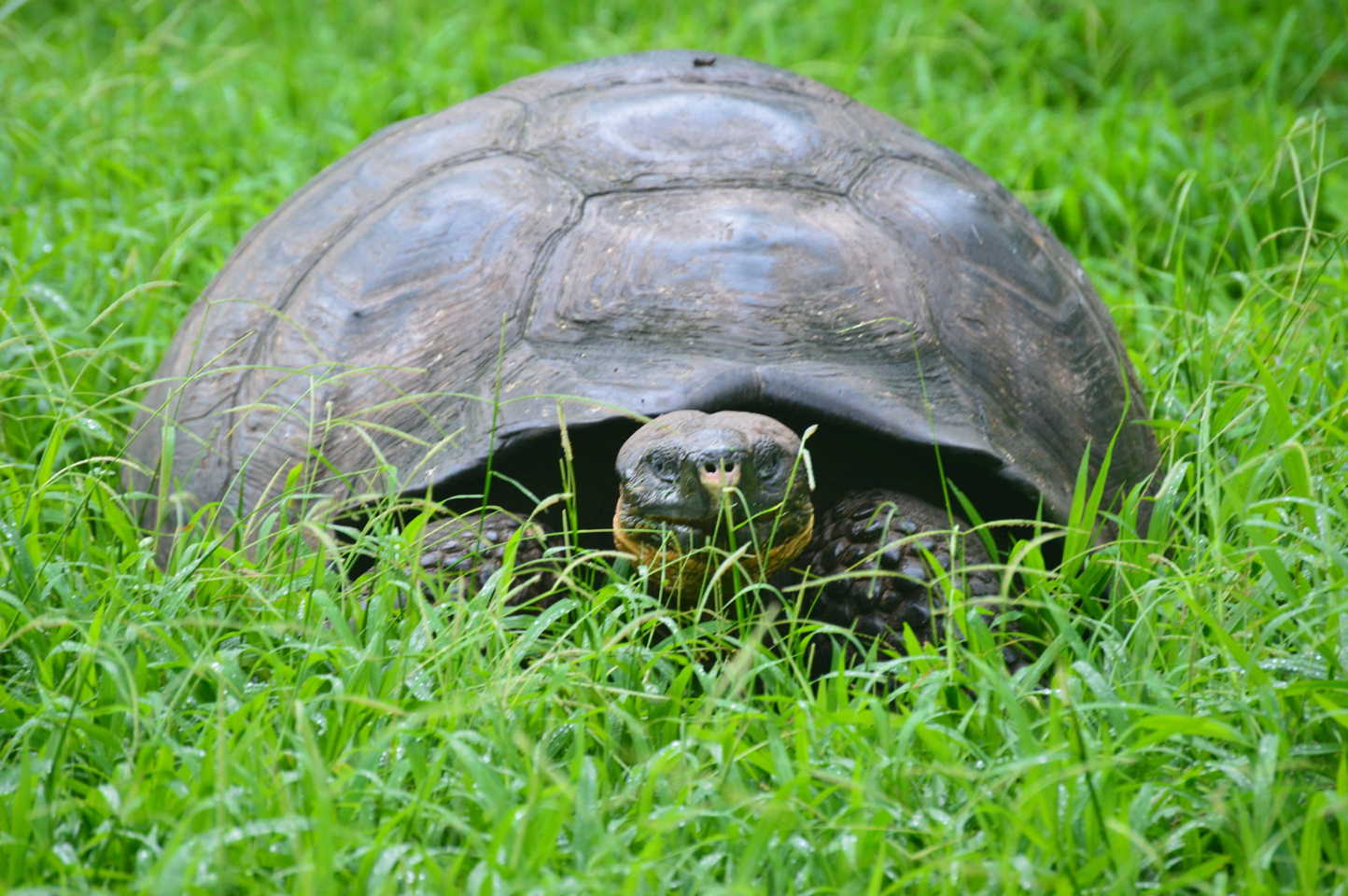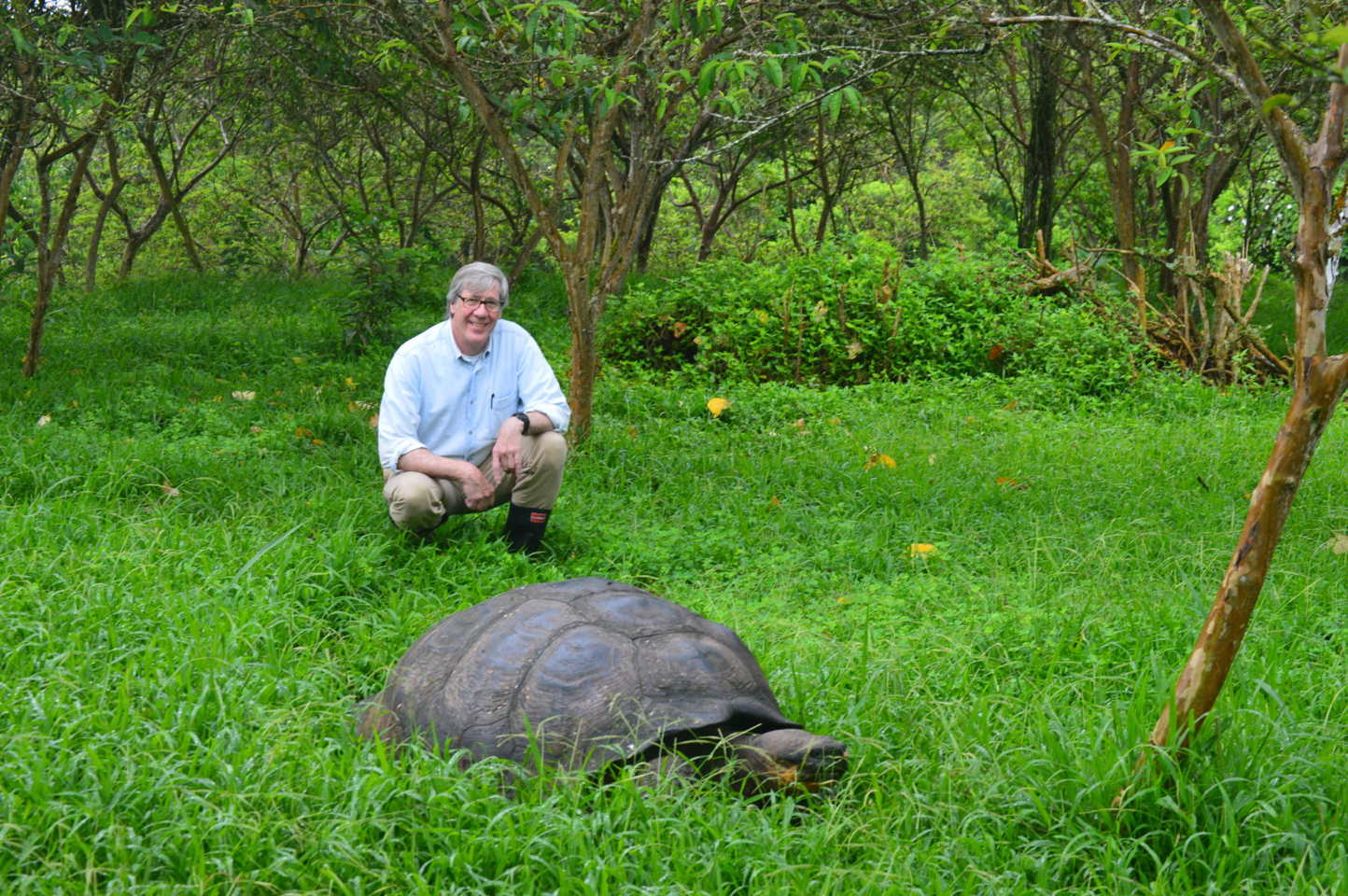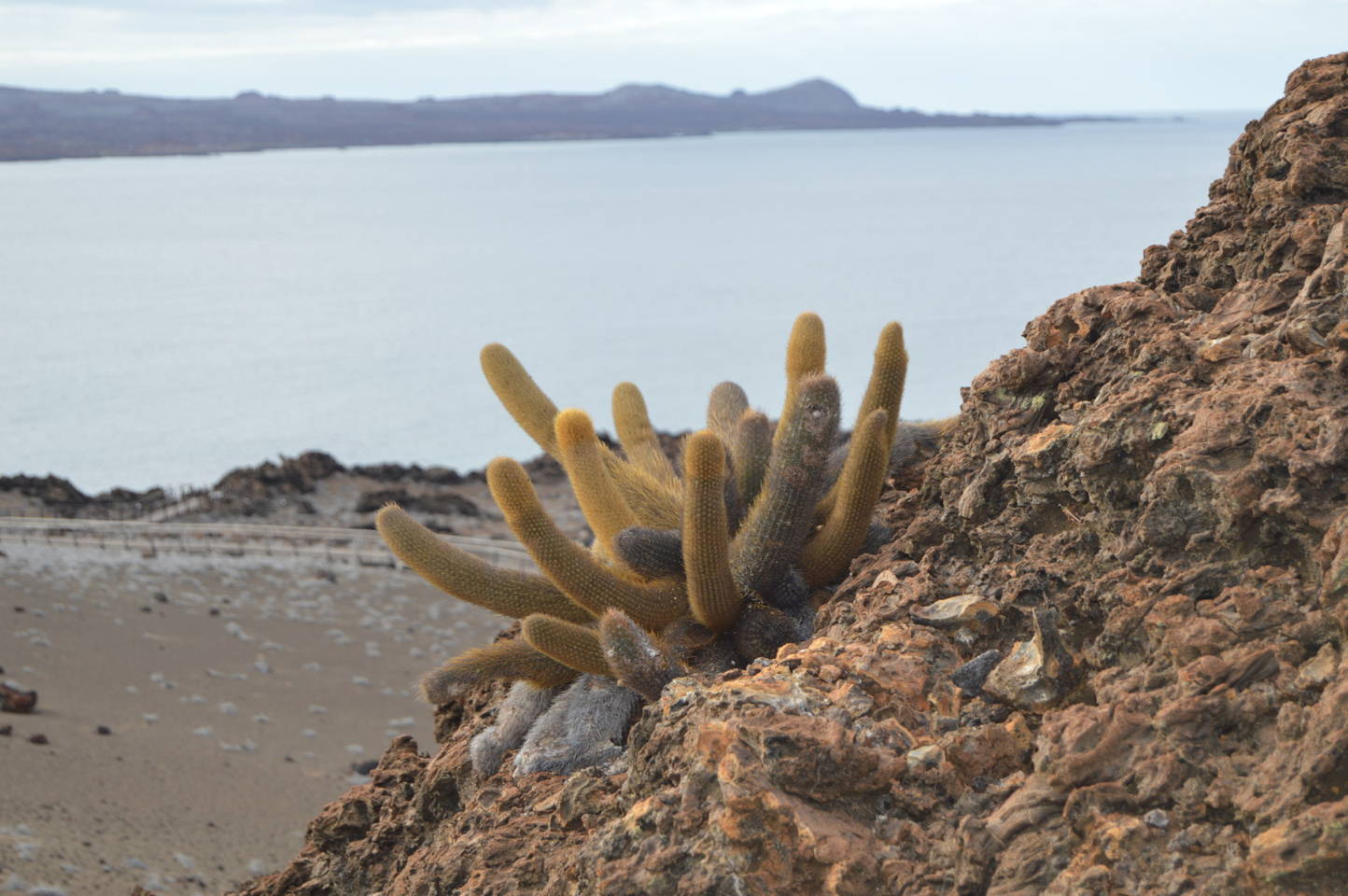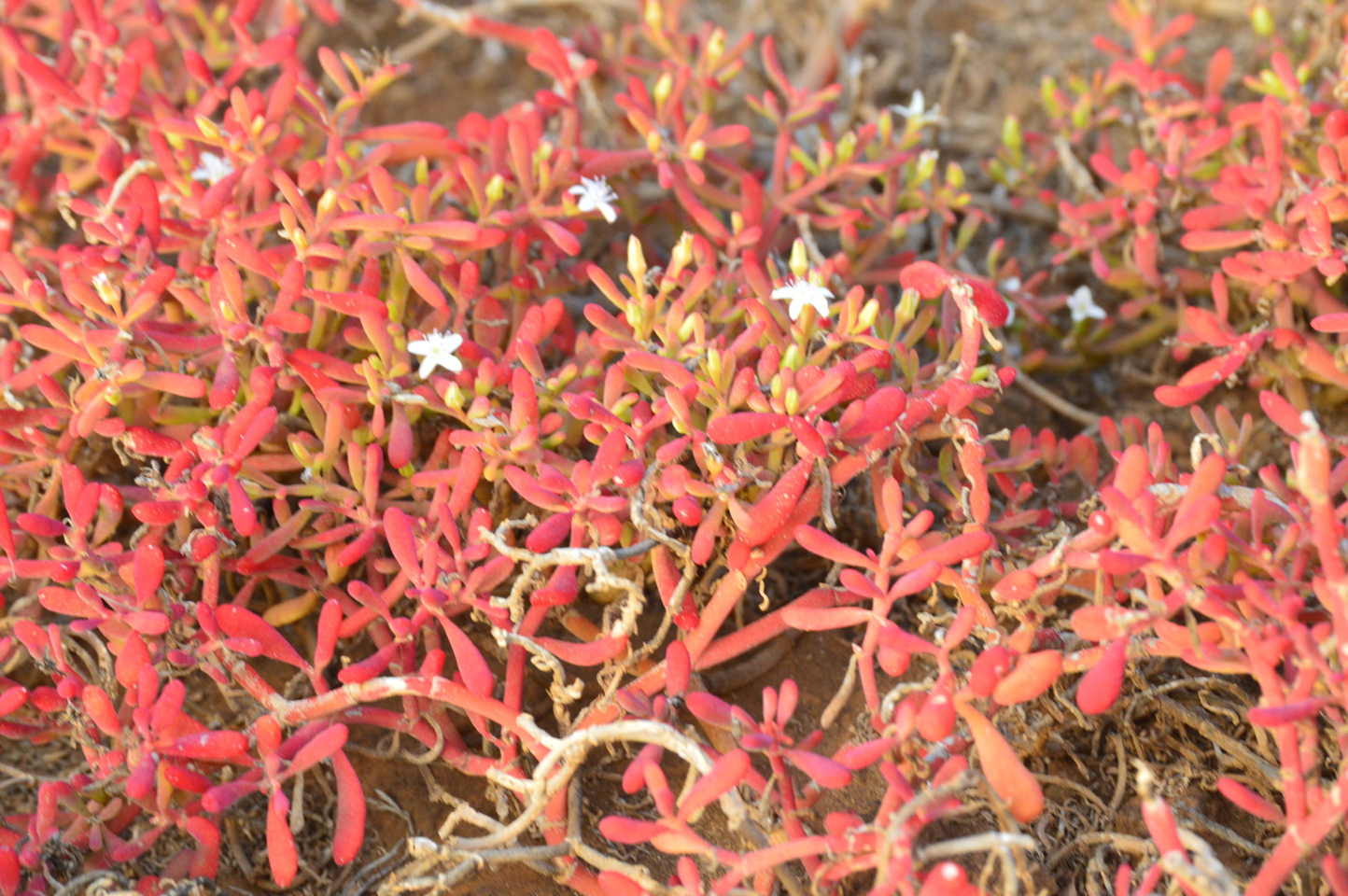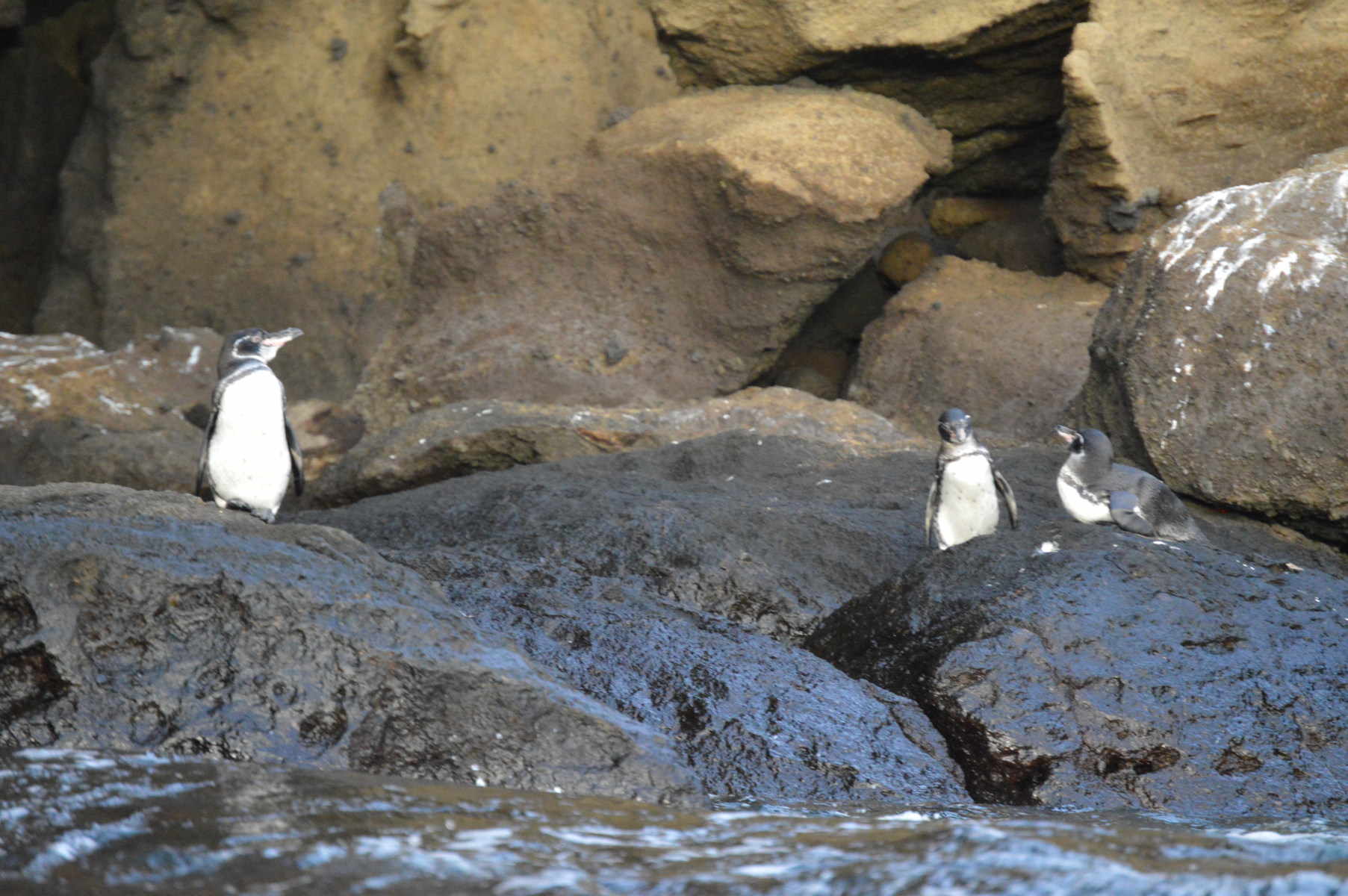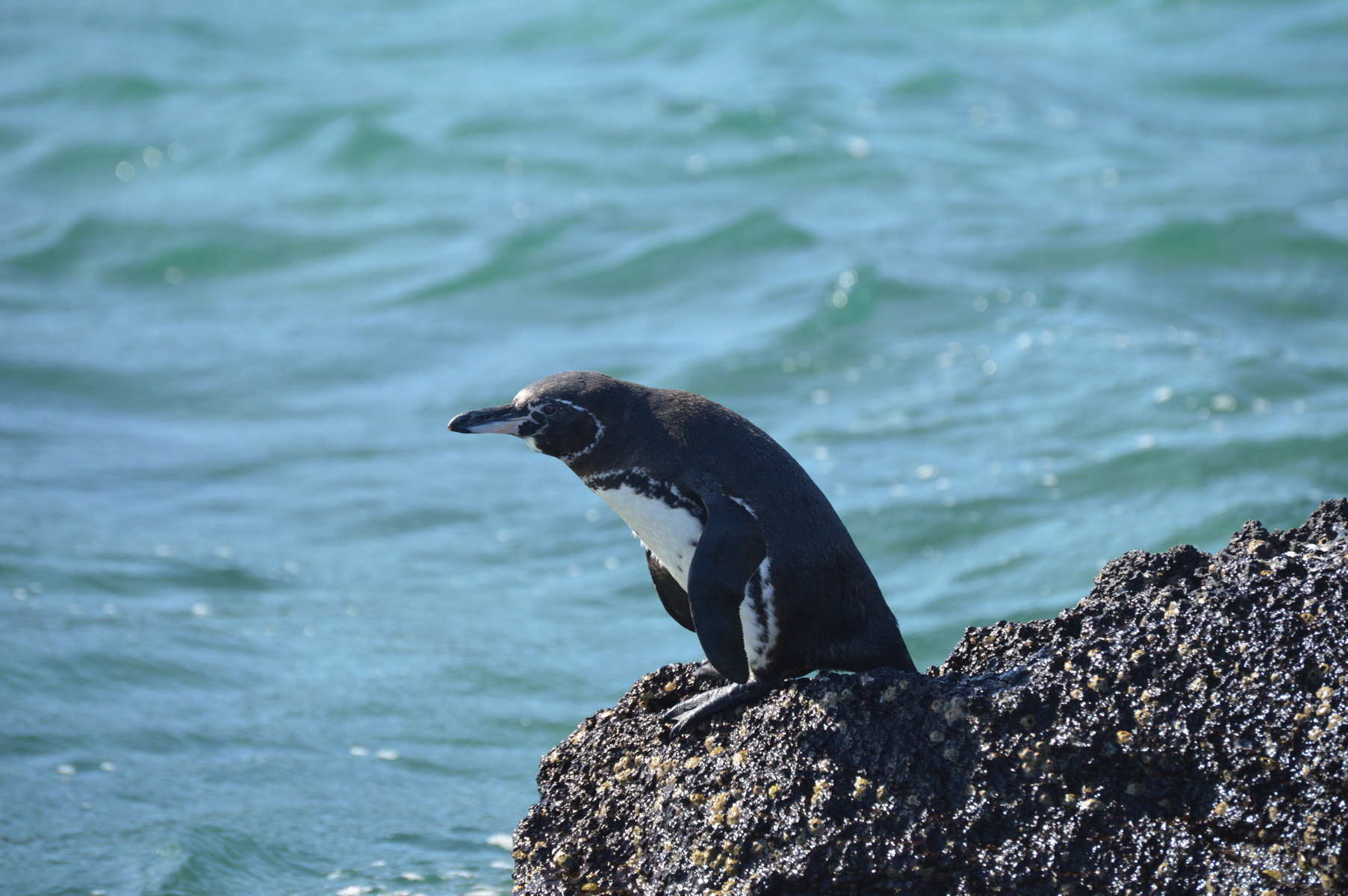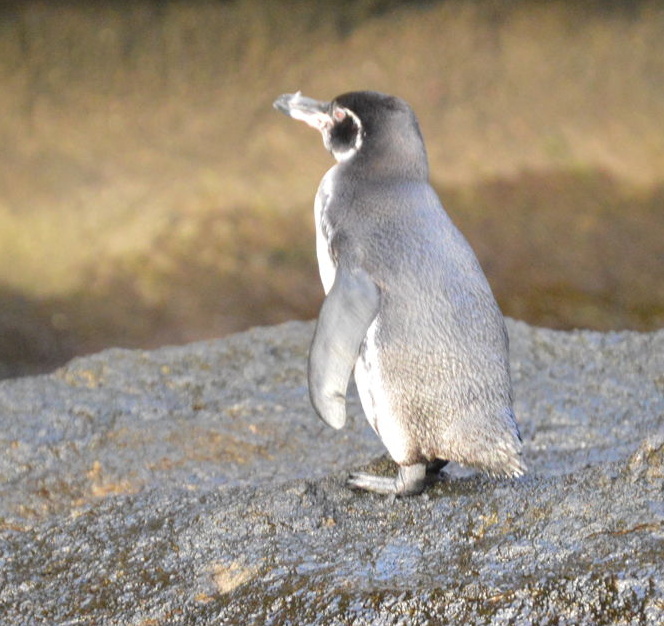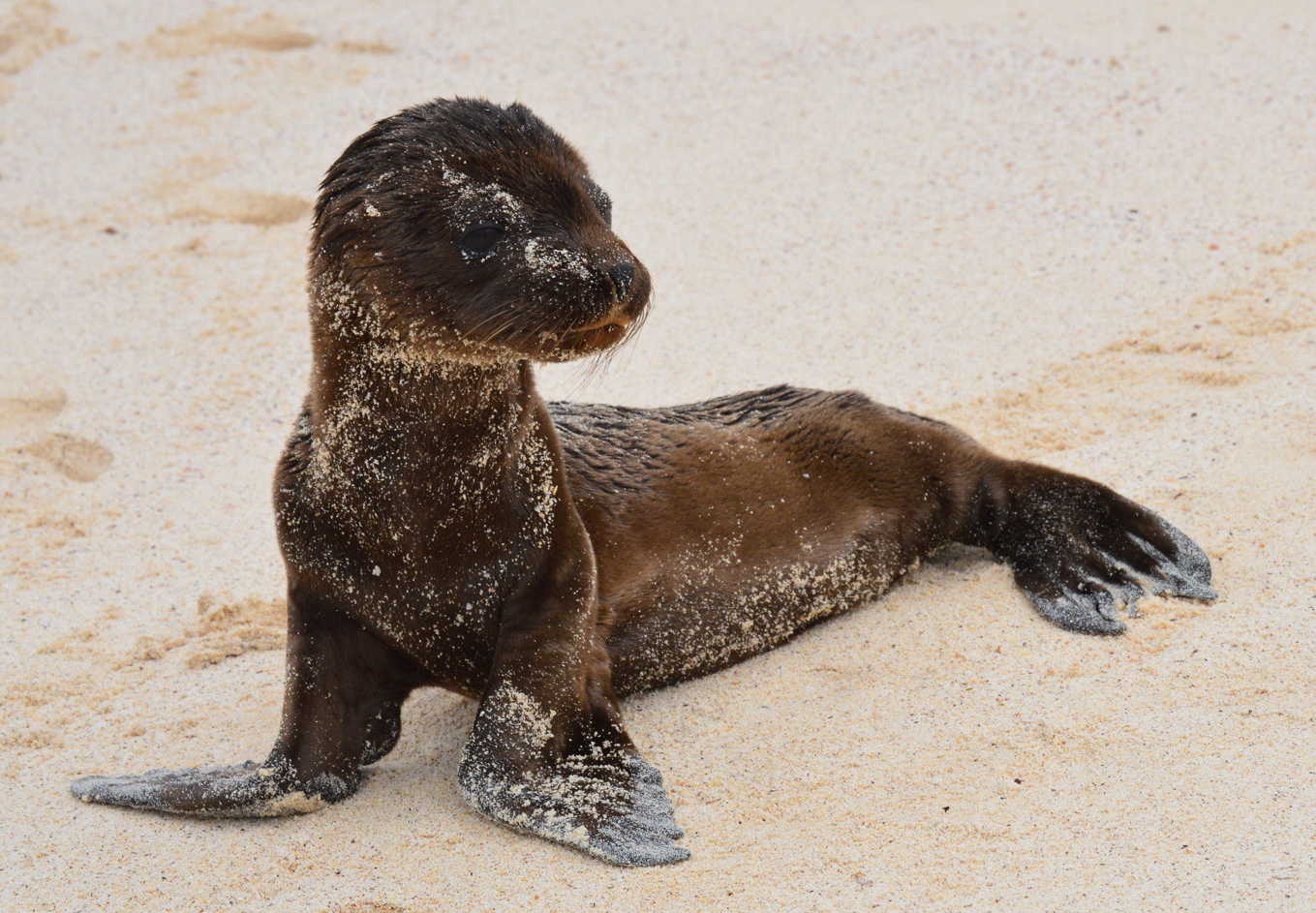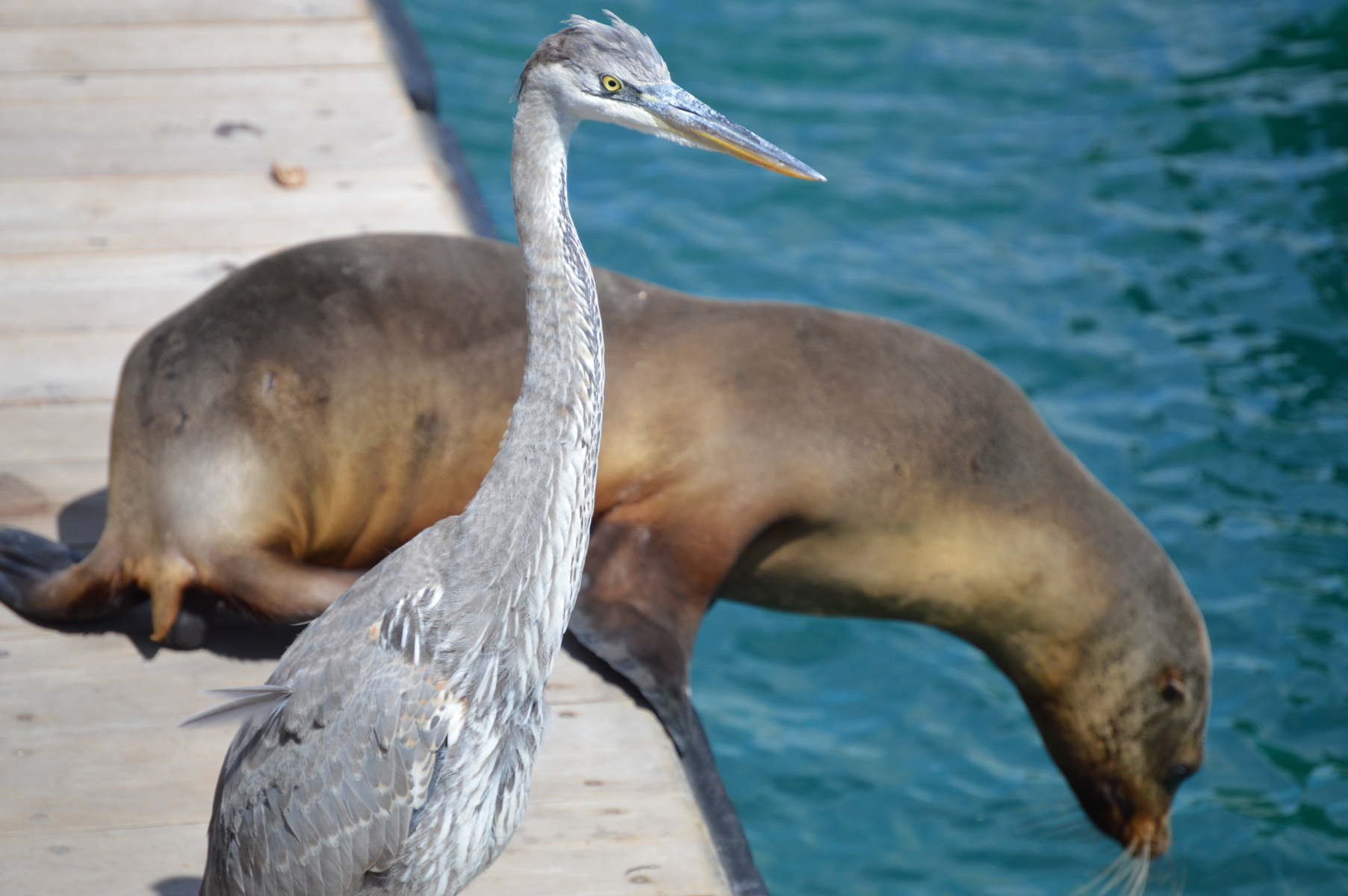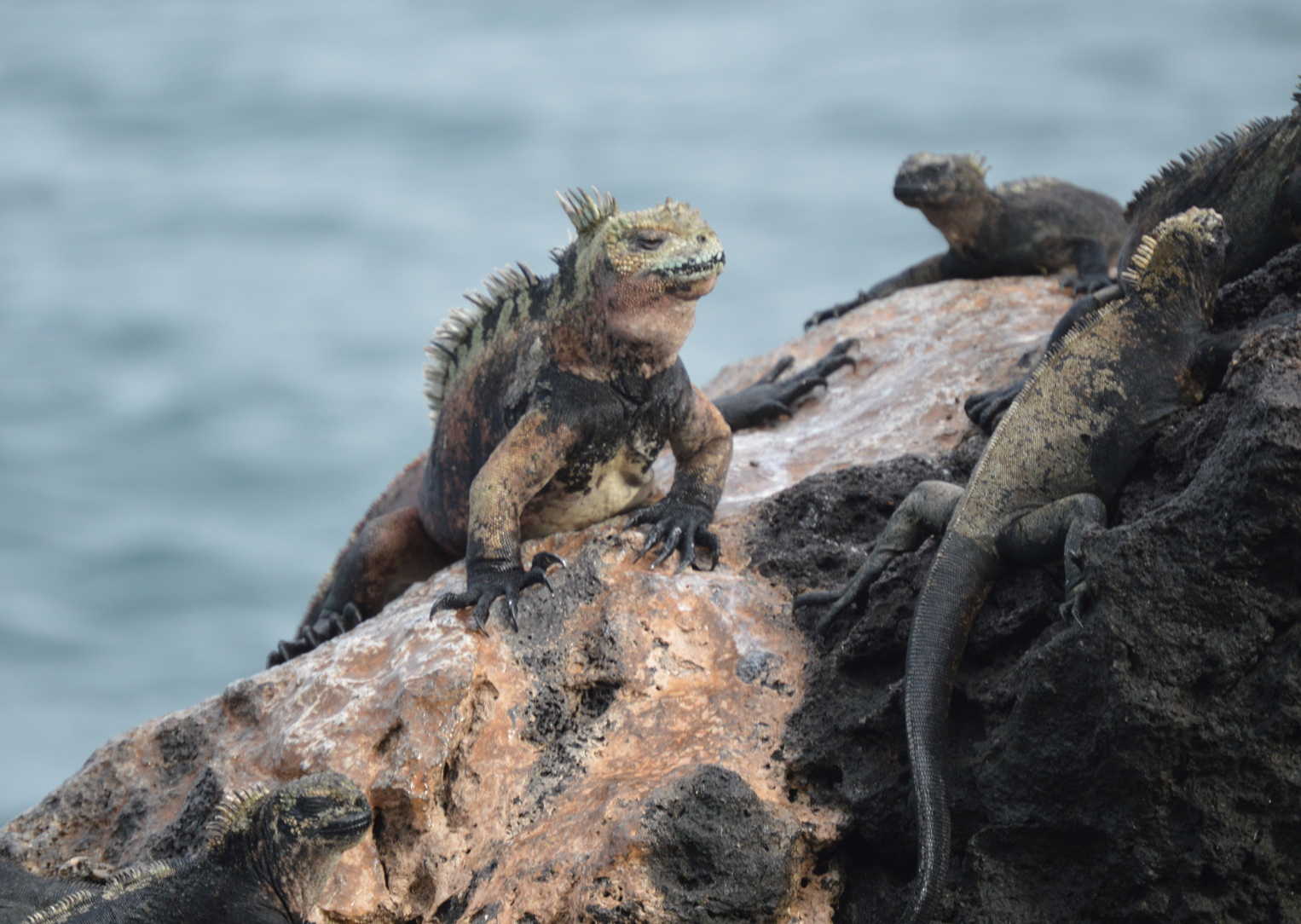The second part of our trip took us from Peru (linked if you missed it) to Quito, Ecuador and then on to the Galapagos Islands …. these are mostly animals and plants. And of course if you don’t start with the finches, it has to be:
the tortoises.
Or maybe the marine iguanas …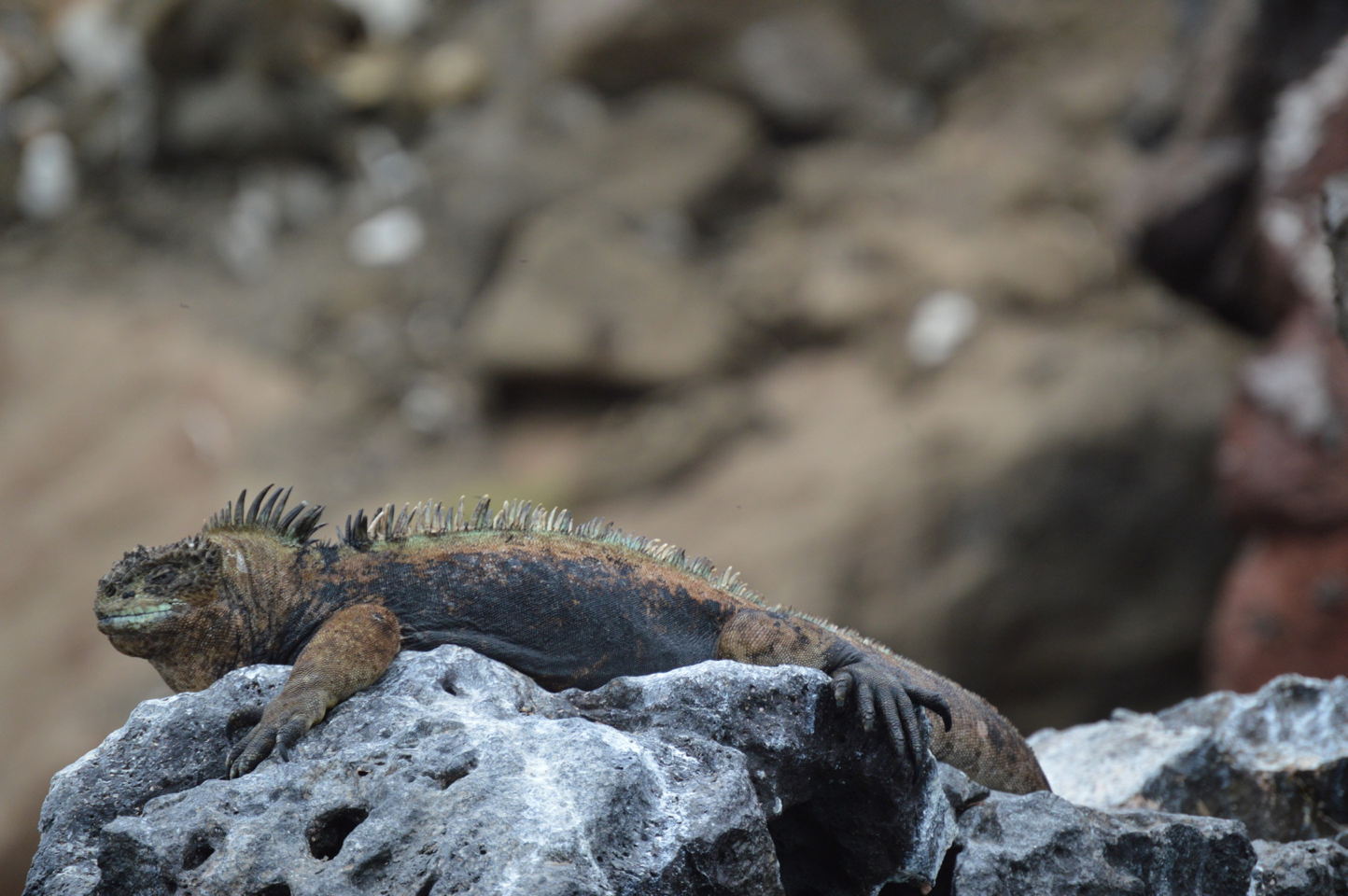
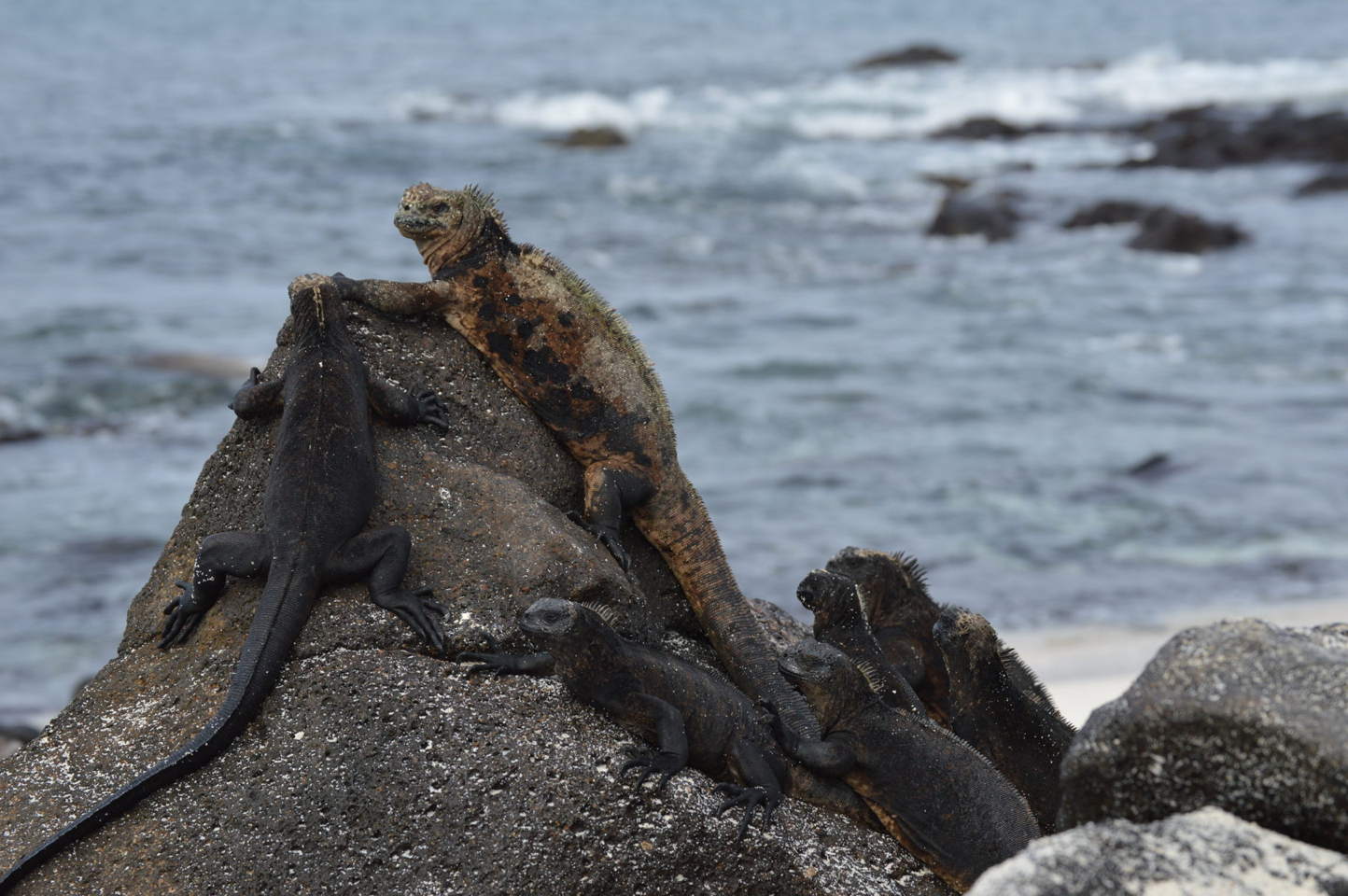
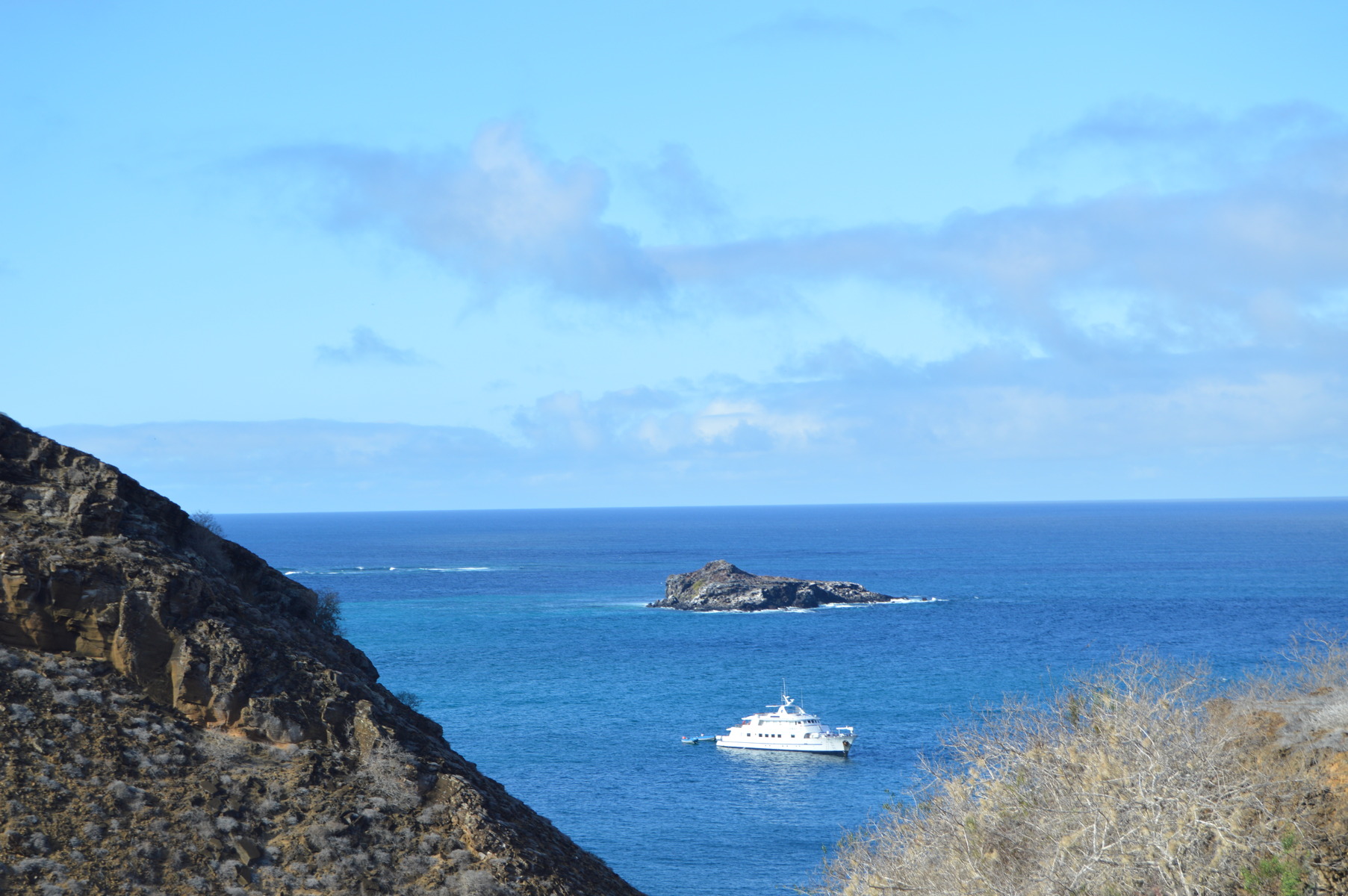
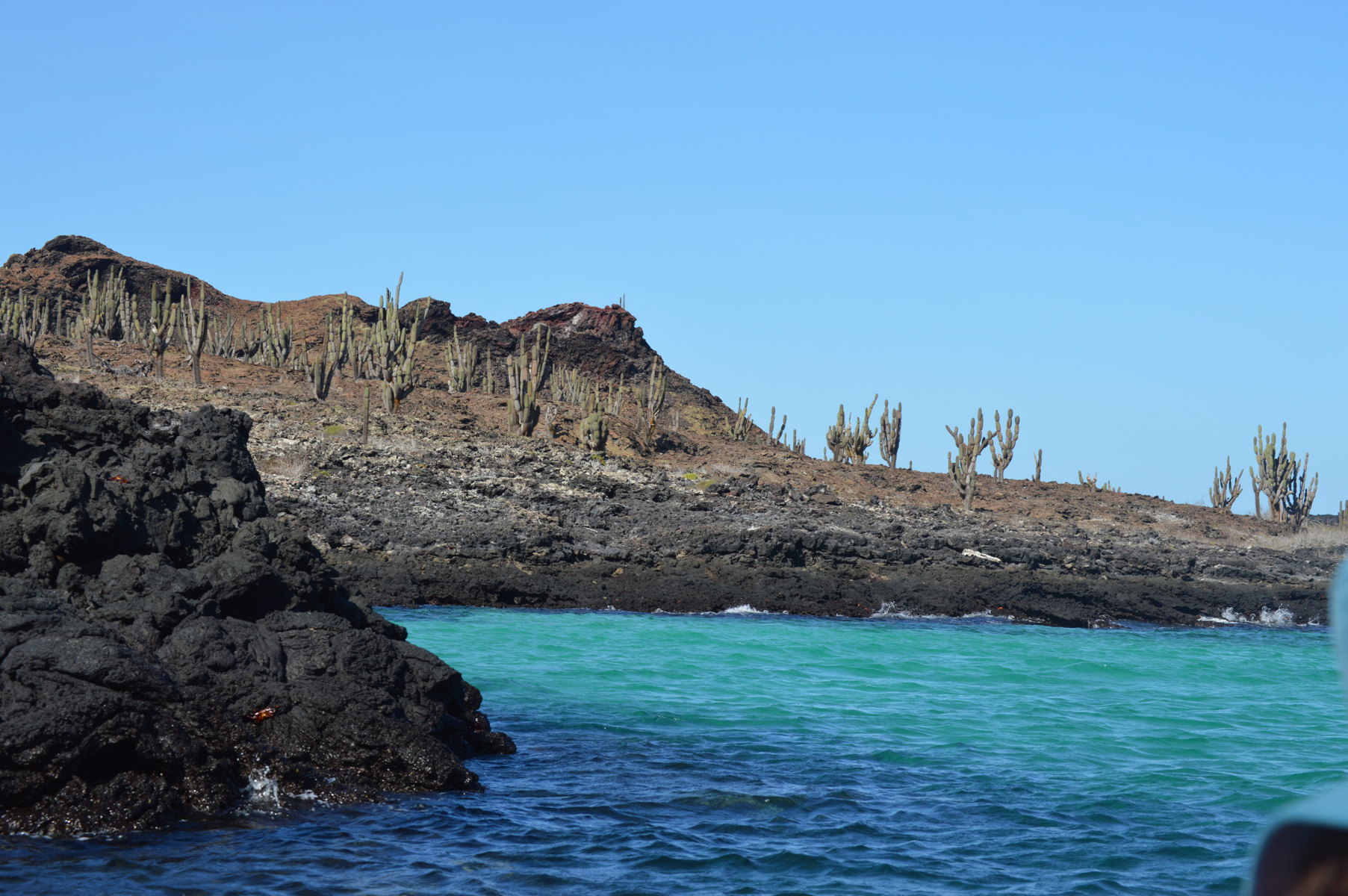 Those are cacti on the shore there – specifically a species of Opuntia cactus of which there are several among the islands. Here are some more on Rabida – and notice that the rainy season has not yet begun:
Those are cacti on the shore there – specifically a species of Opuntia cactus of which there are several among the islands. Here are some more on Rabida – and notice that the rainy season has not yet begun:
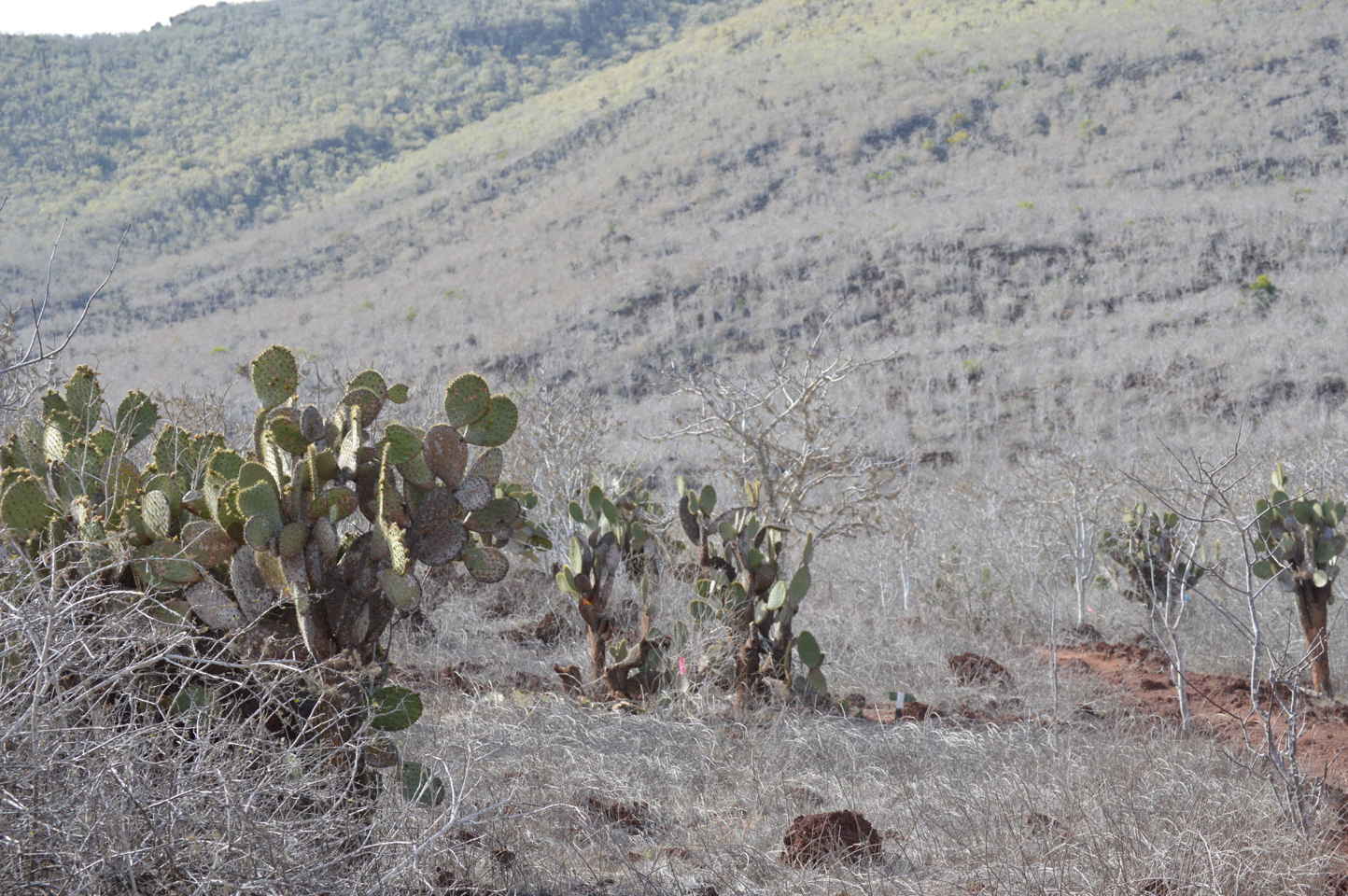
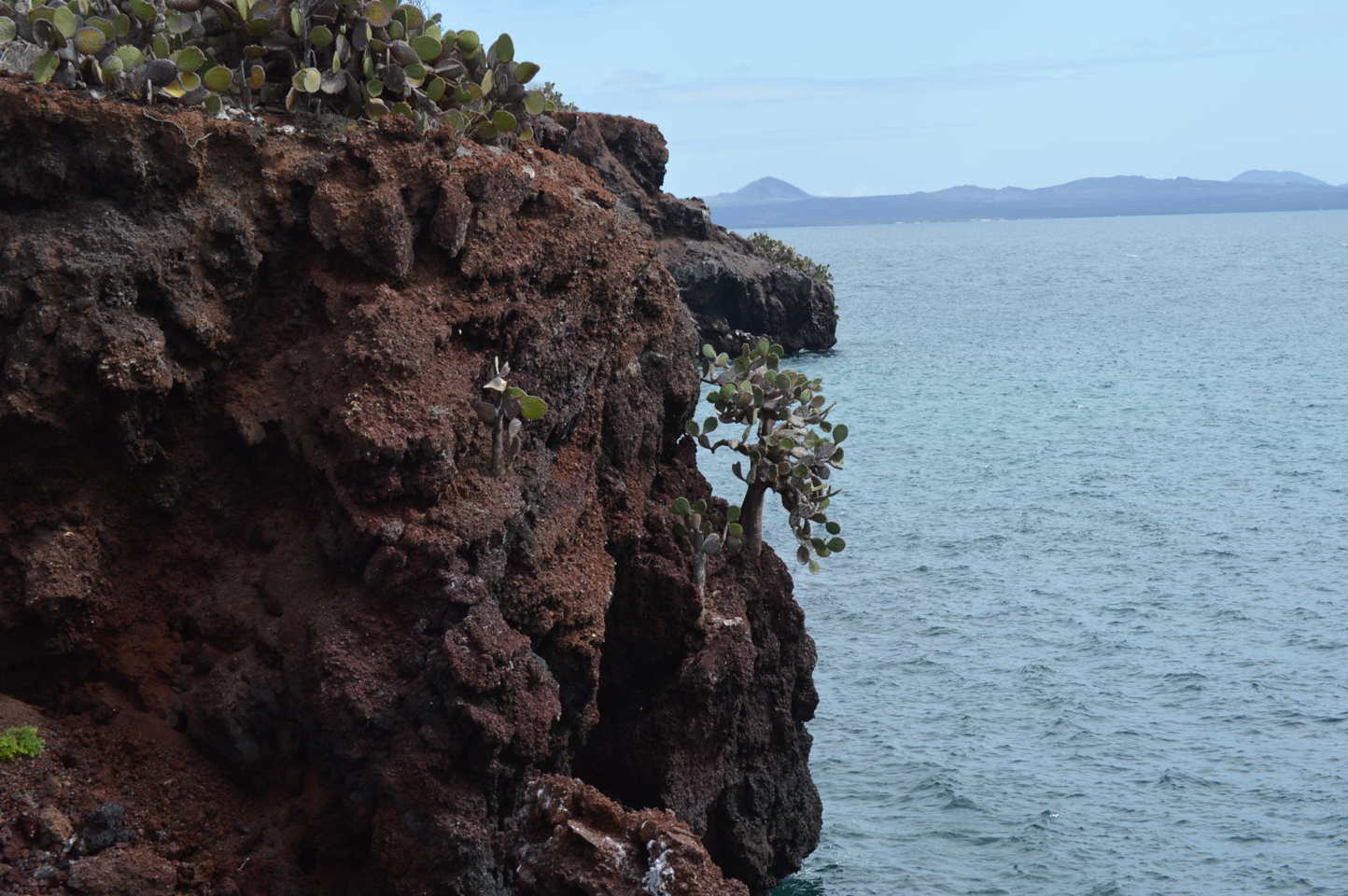
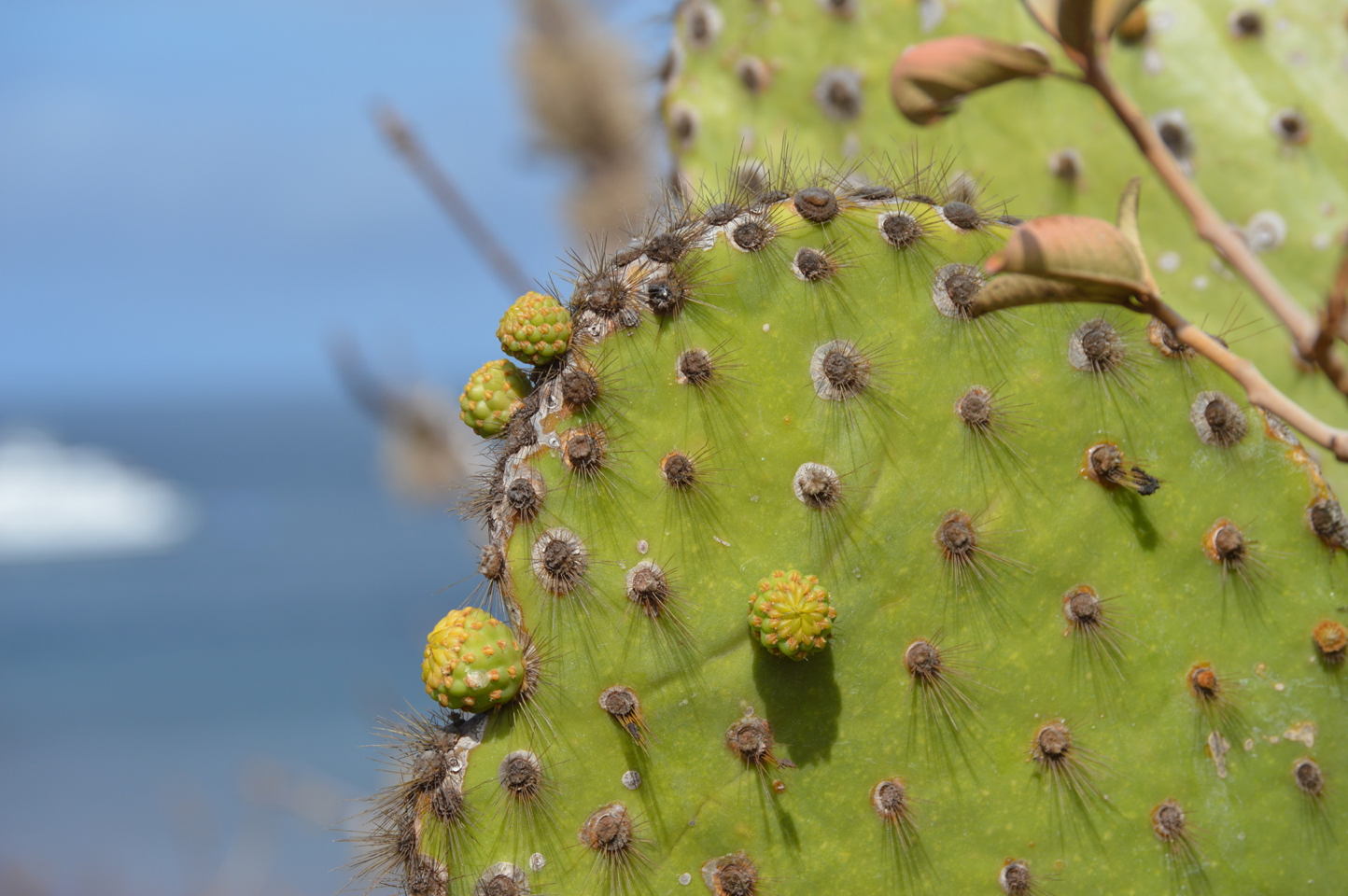
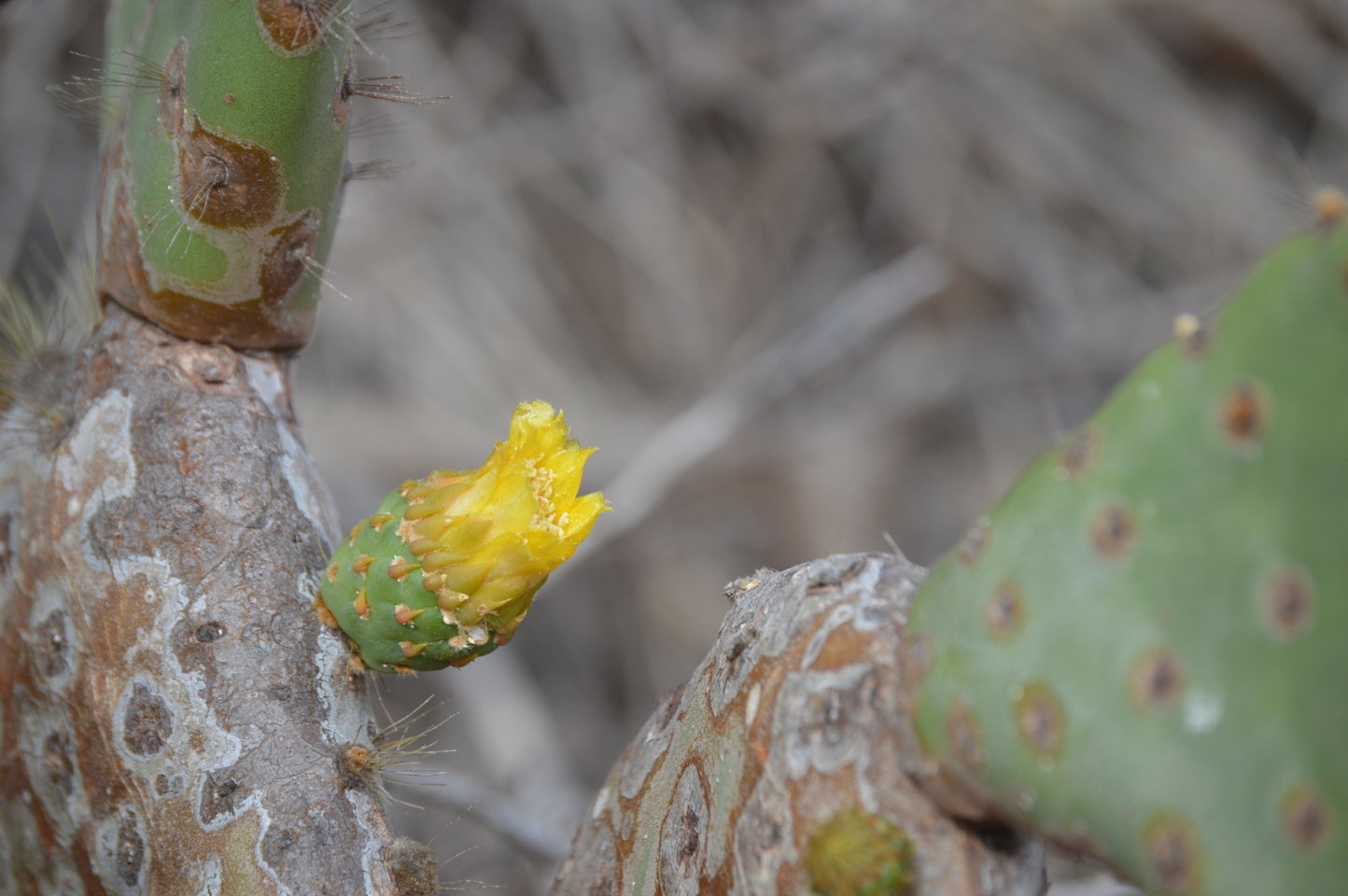
Before the animals, more plants. A lava cactus and carpetweed (Sesuvium)
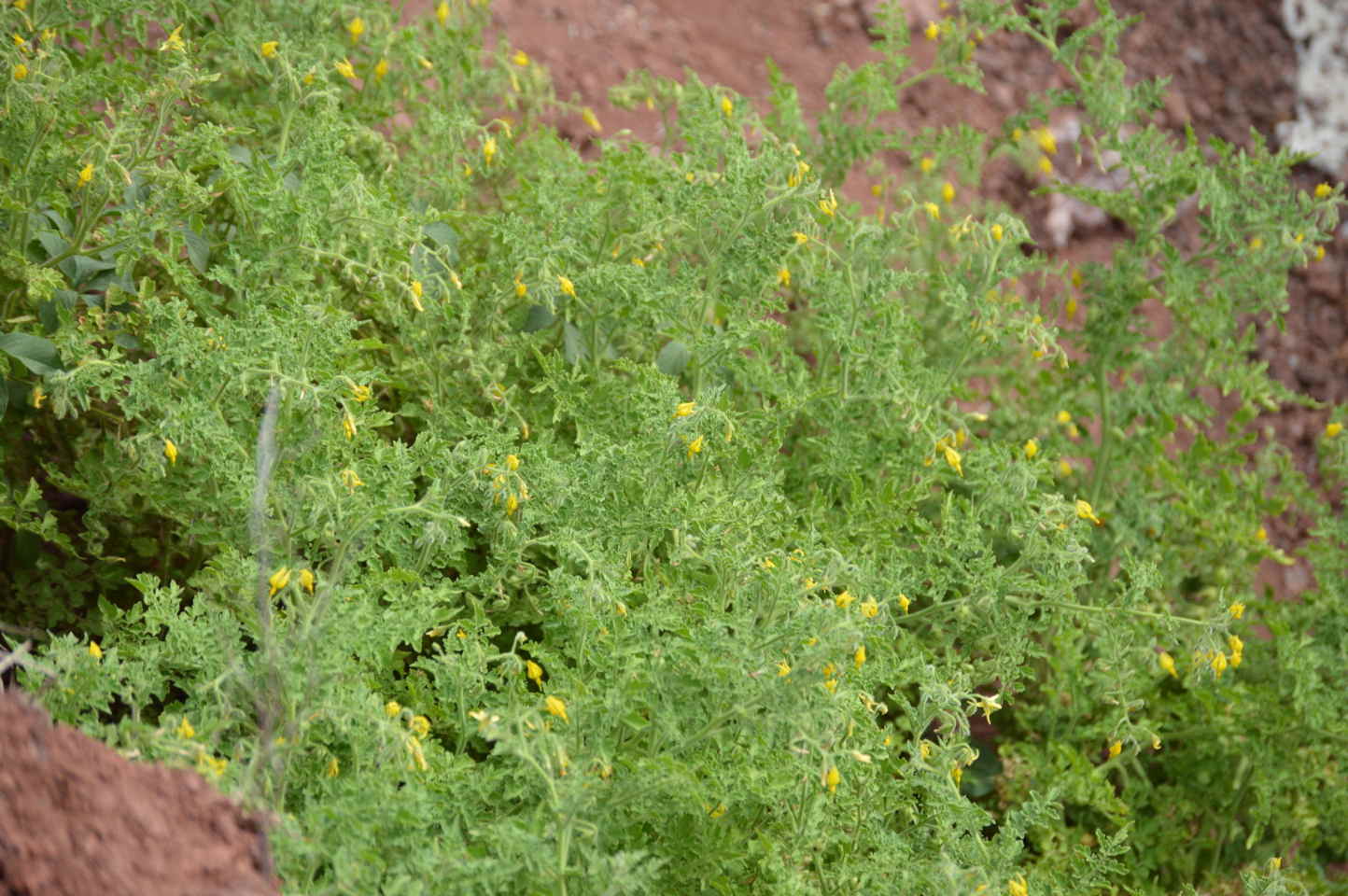 To the right a Galapagos Tomato (really). And below a view that shows the strong vertical zonation seen on many of the islands (this is Rabida again). On islands with enough elevation you more zonation with increasing green at higher elevations due to increased moisture as one goes up slope. Remember that the dry season was extended this year and the rains have not yet brought the spring greening. Also the Tequilia (not tequilla) or Gray Mat Plant that is an early succession plant.
To the right a Galapagos Tomato (really). And below a view that shows the strong vertical zonation seen on many of the islands (this is Rabida again). On islands with enough elevation you more zonation with increasing green at higher elevations due to increased moisture as one goes up slope. Remember that the dry season was extended this year and the rains have not yet brought the spring greening. Also the Tequilia (not tequilla) or Gray Mat Plant that is an early succession plant. 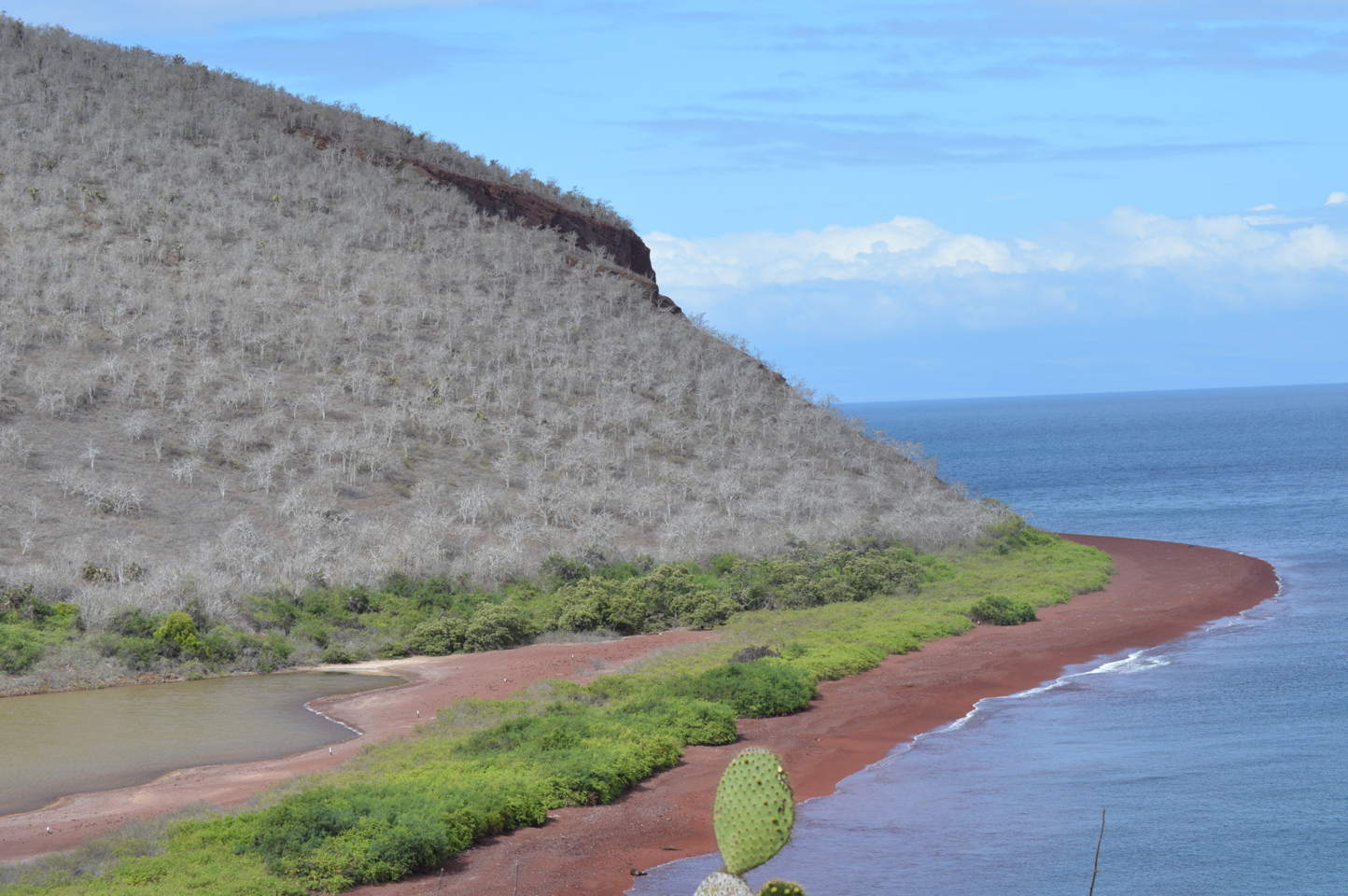
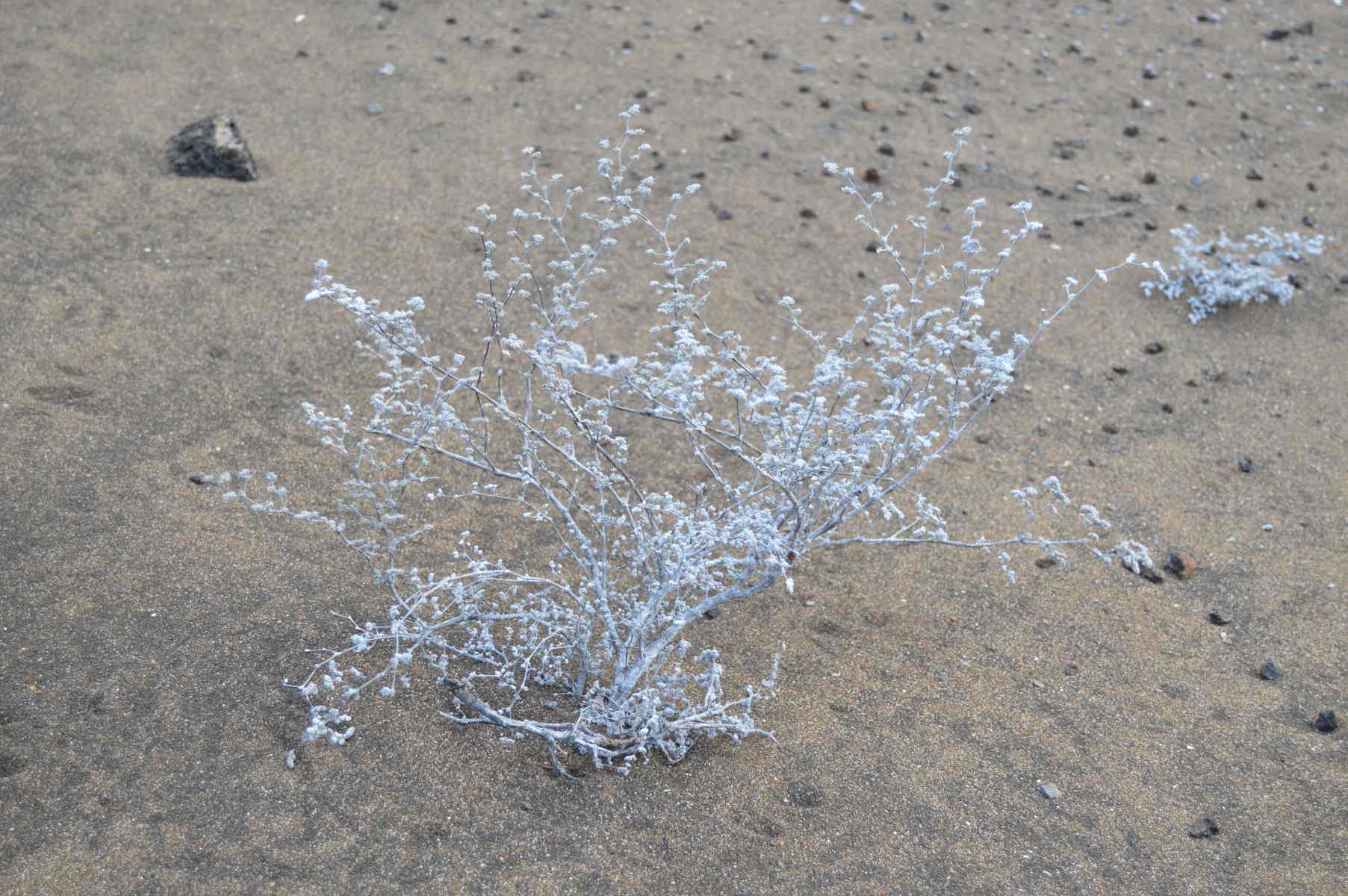
And now some of the birds – some of these are found elsewhere, but if the common name includes Galapagos they are, of course endemic. For instance, the red-footed and blue-footed boobies are found other places in the tropics 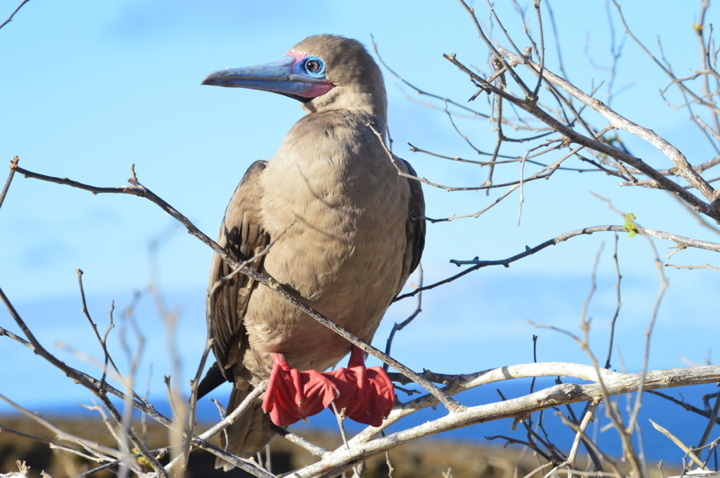
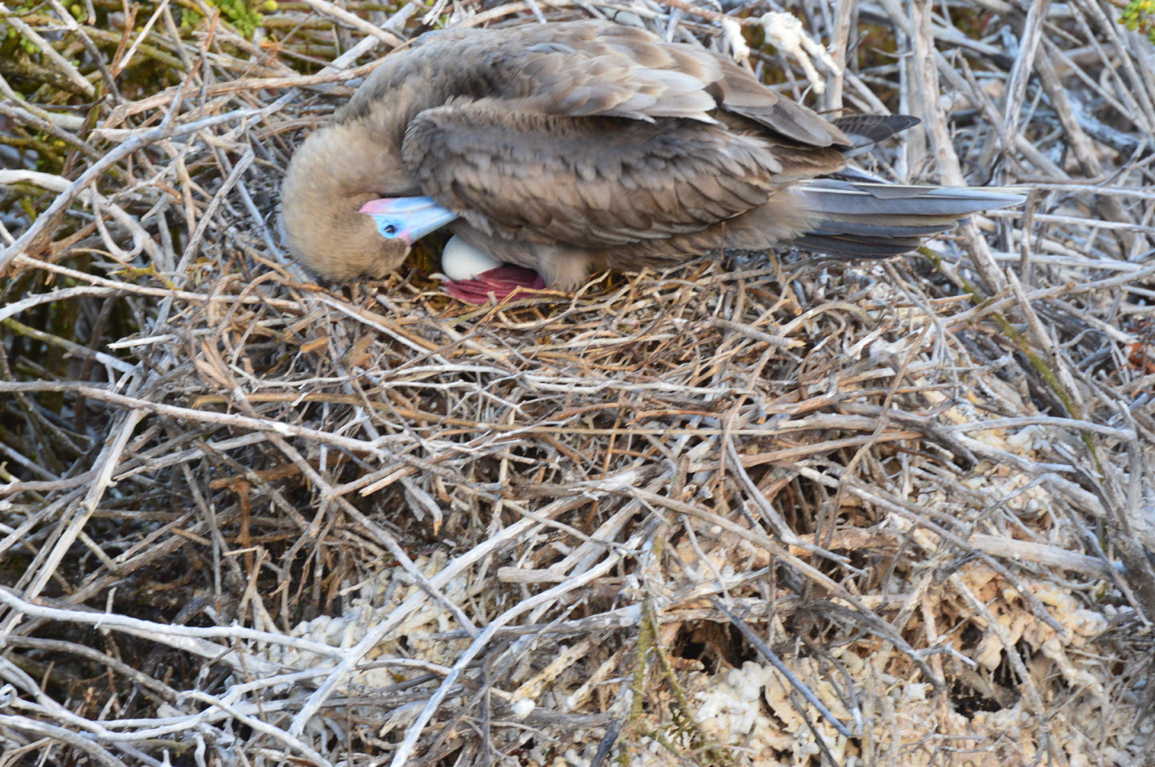
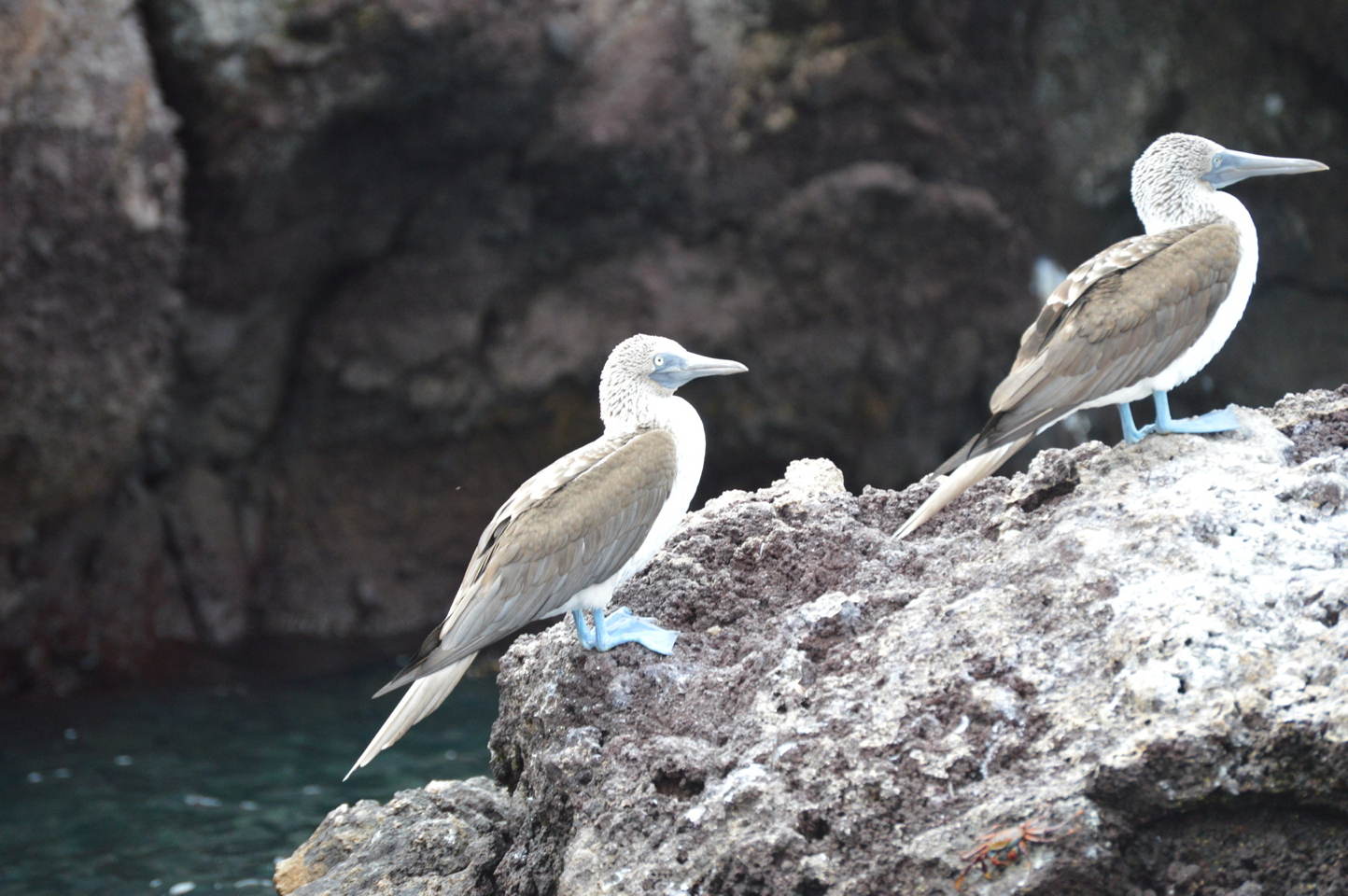
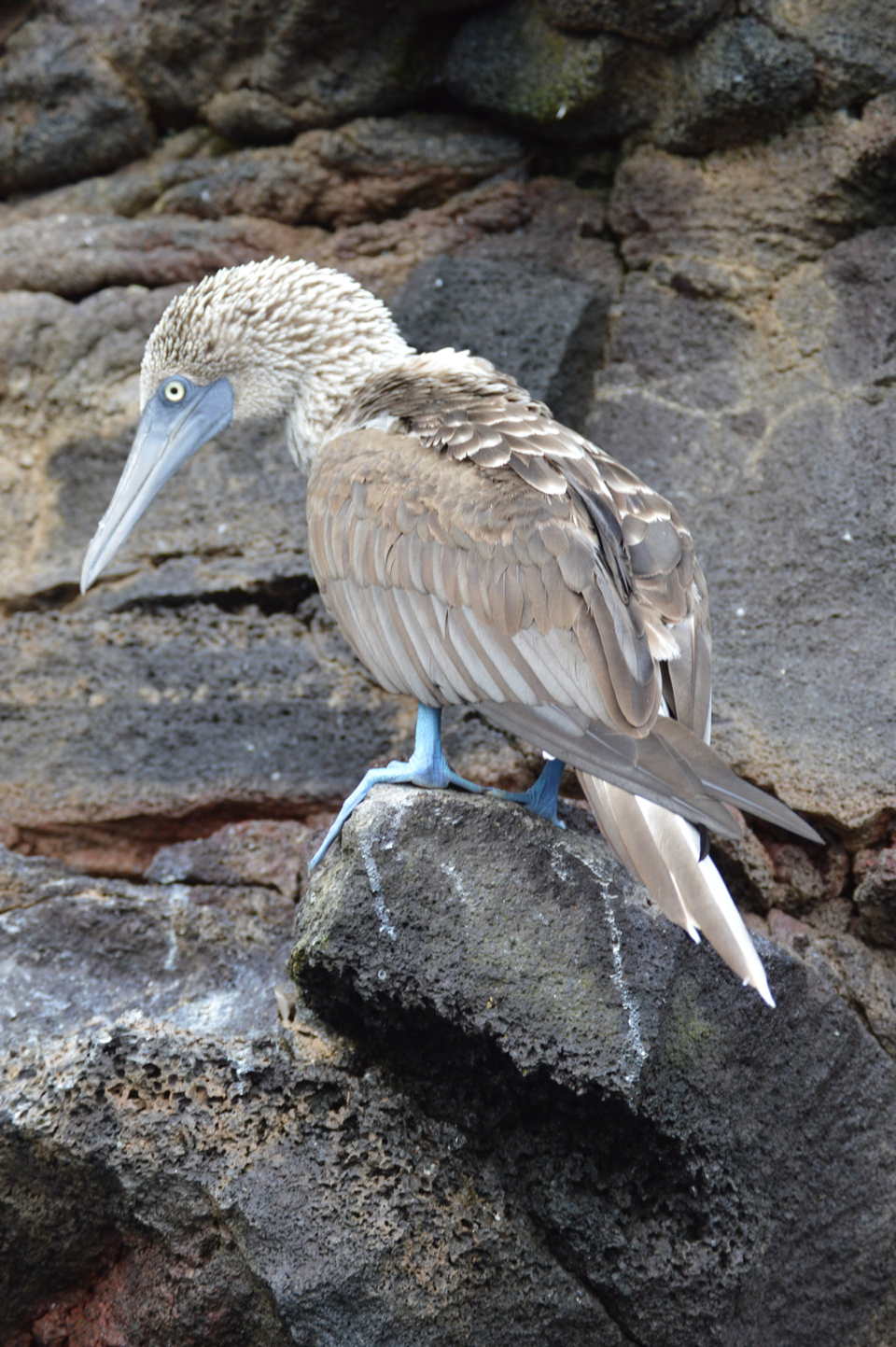 You’ve already figured out which are the red-footed and blue-footed, I’m sure. The white & black one is the Nazca Booby.
You’ve already figured out which are the red-footed and blue-footed, I’m sure. The white & black one is the Nazca Booby. 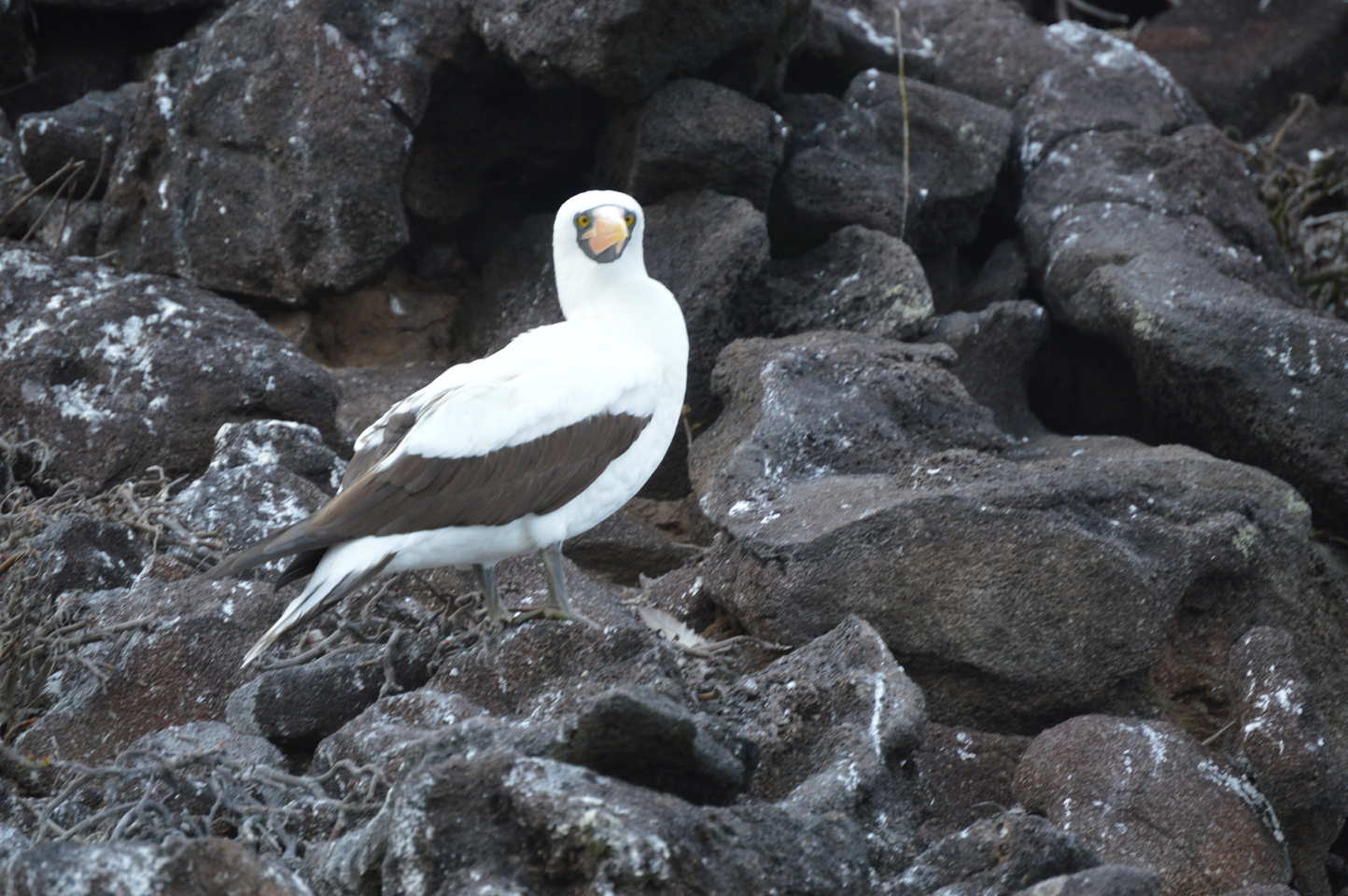
Have to include at least one finch (ground finch maybe) and a yellow warbler. 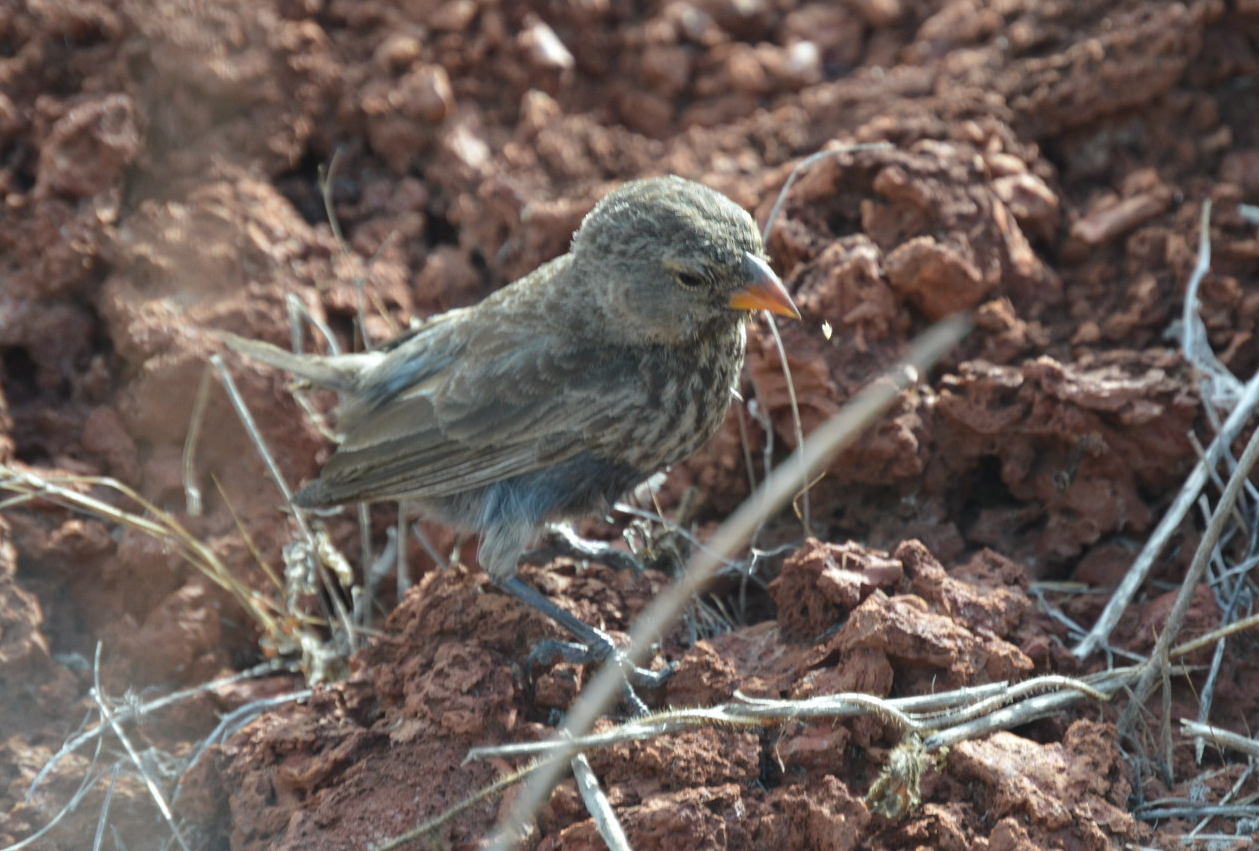
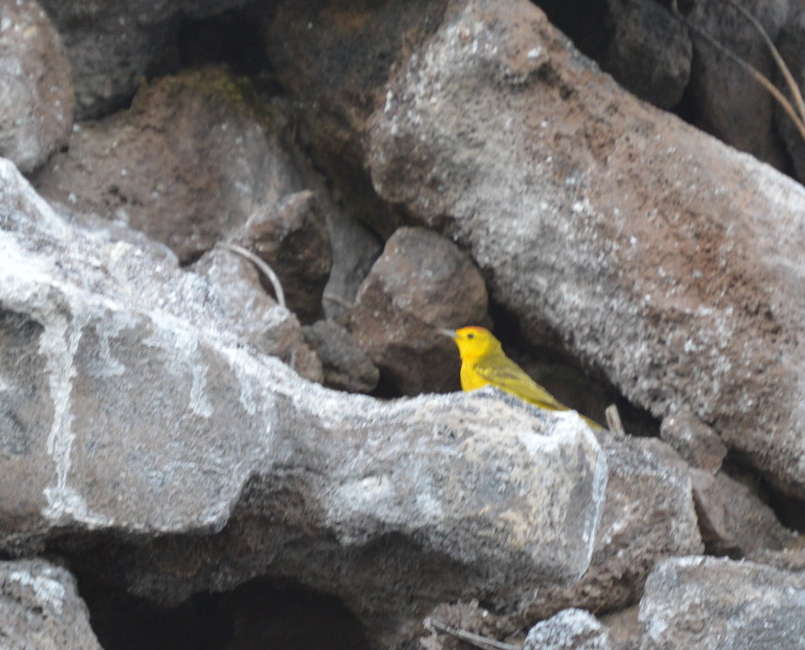
A Galapagos Hawk and Galapagos Dove …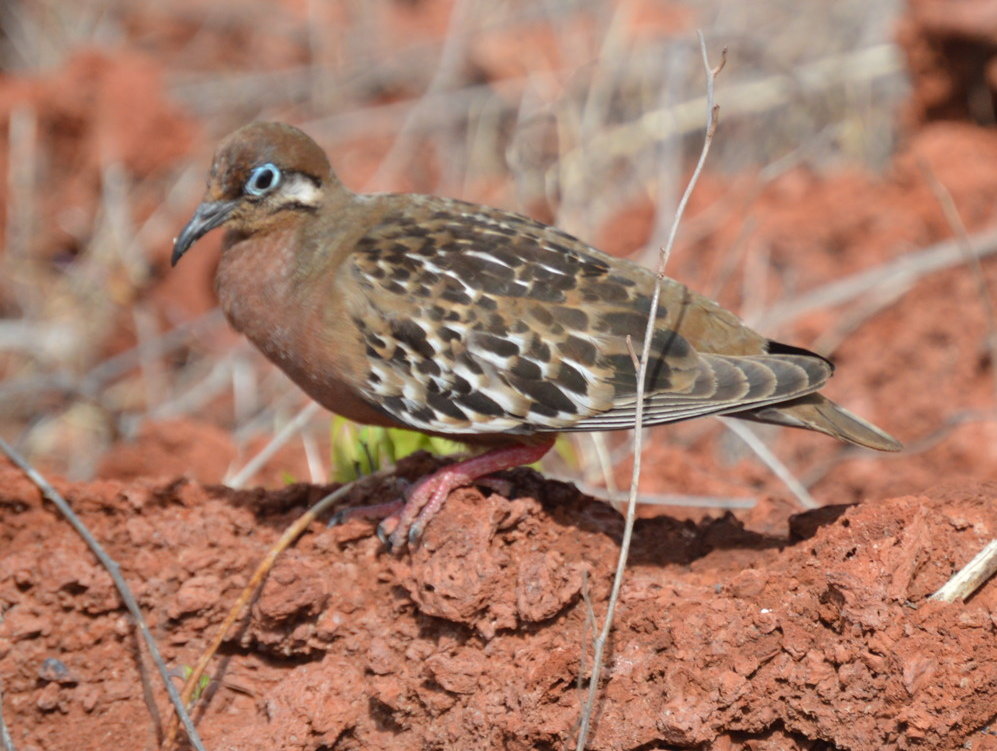
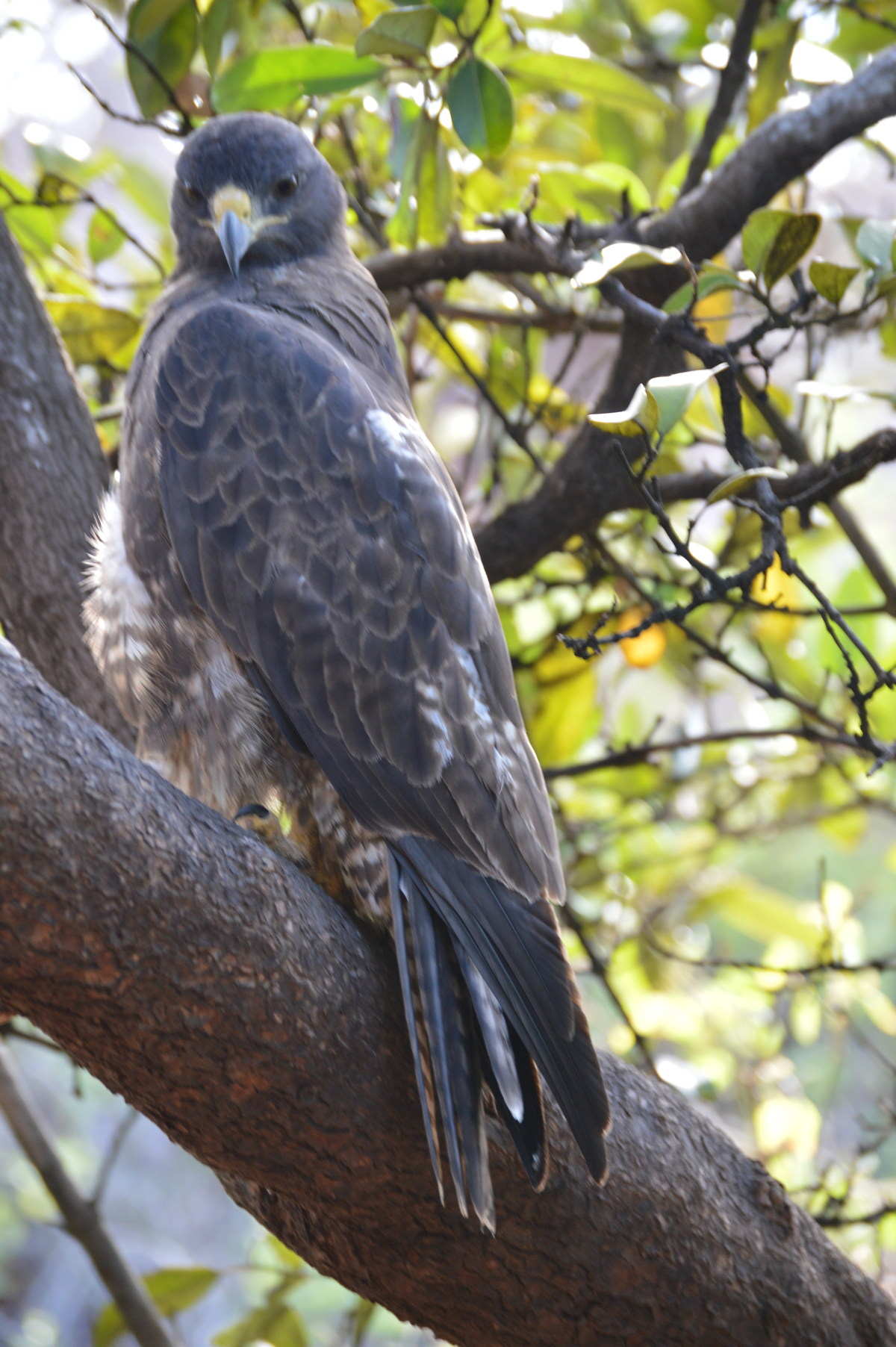
… nothing political intended …..
And a Lava Heron – dark against the lava and rock.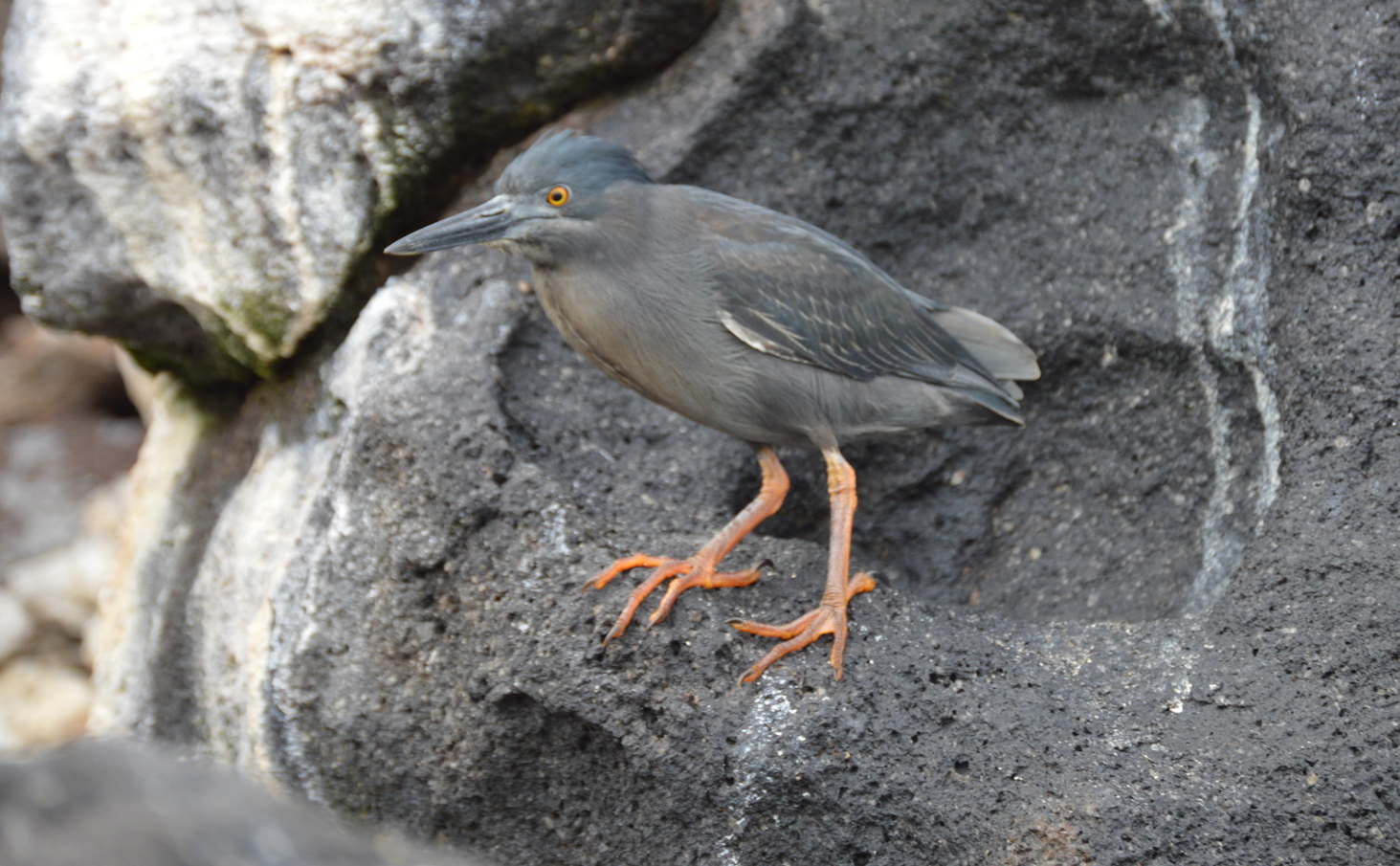
Some other more wide-ranging birds waterbirds: Oystercatchers, Yellow-crested Night Heron, Great Blue Heron & a Tropicbird. 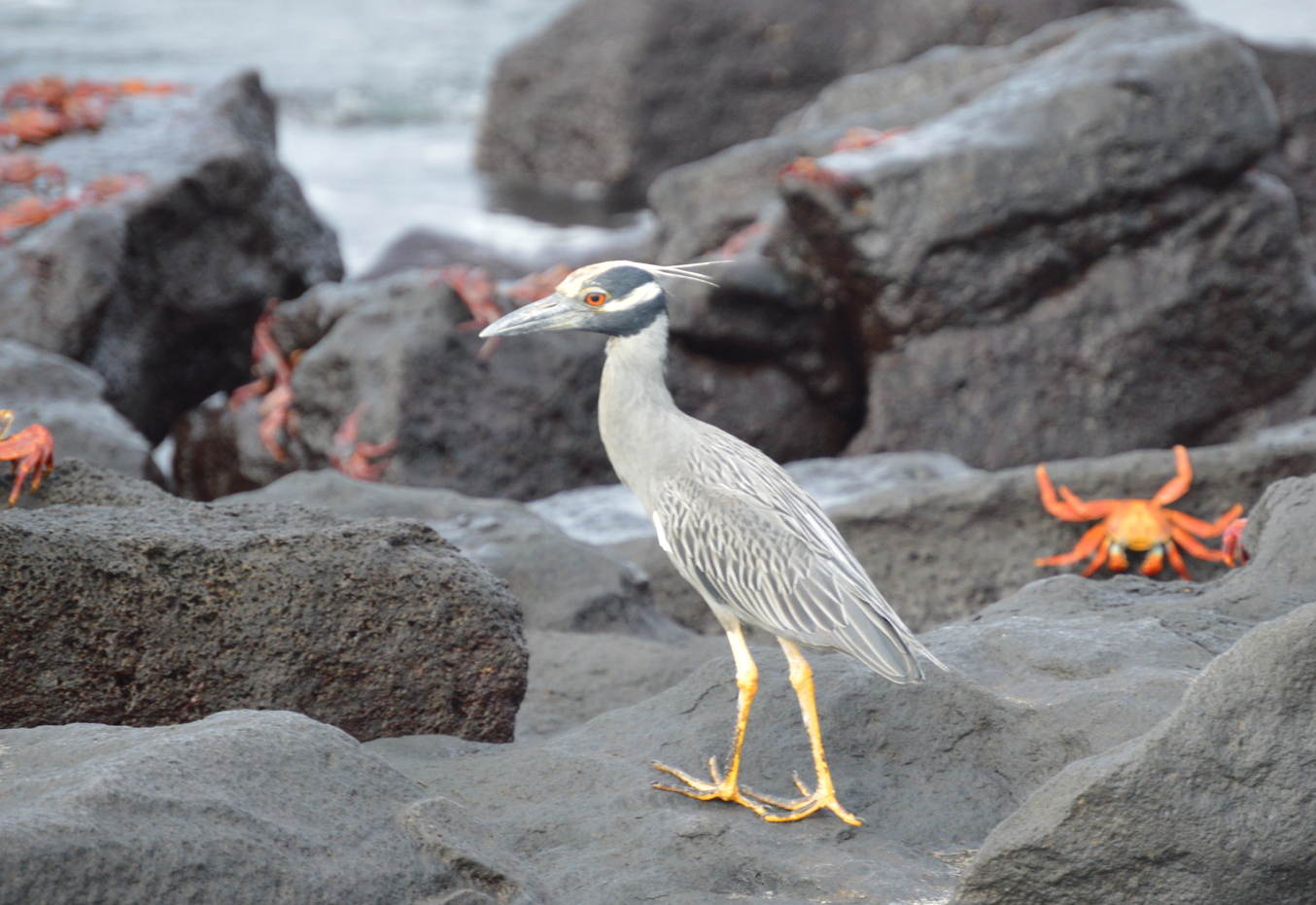
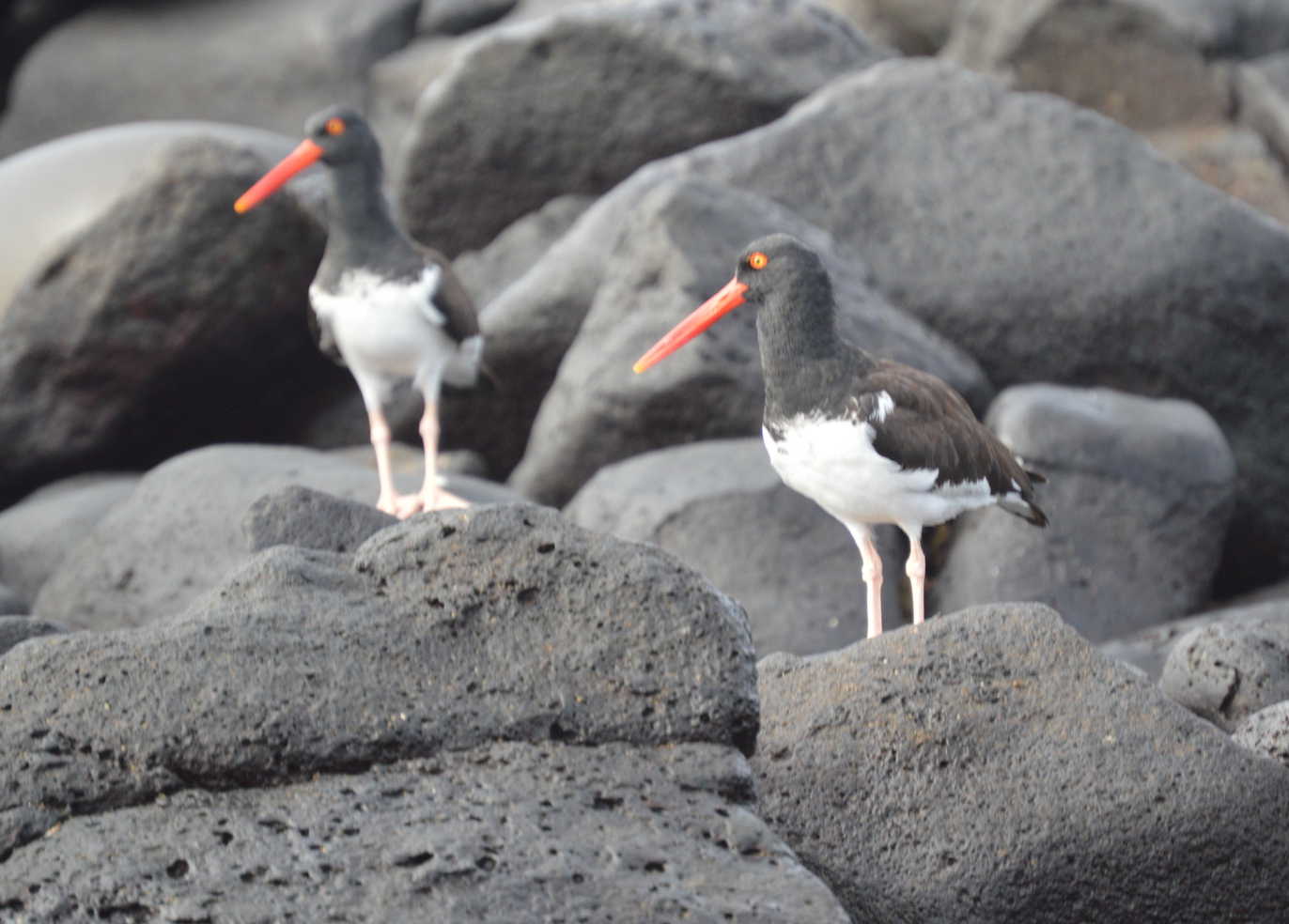
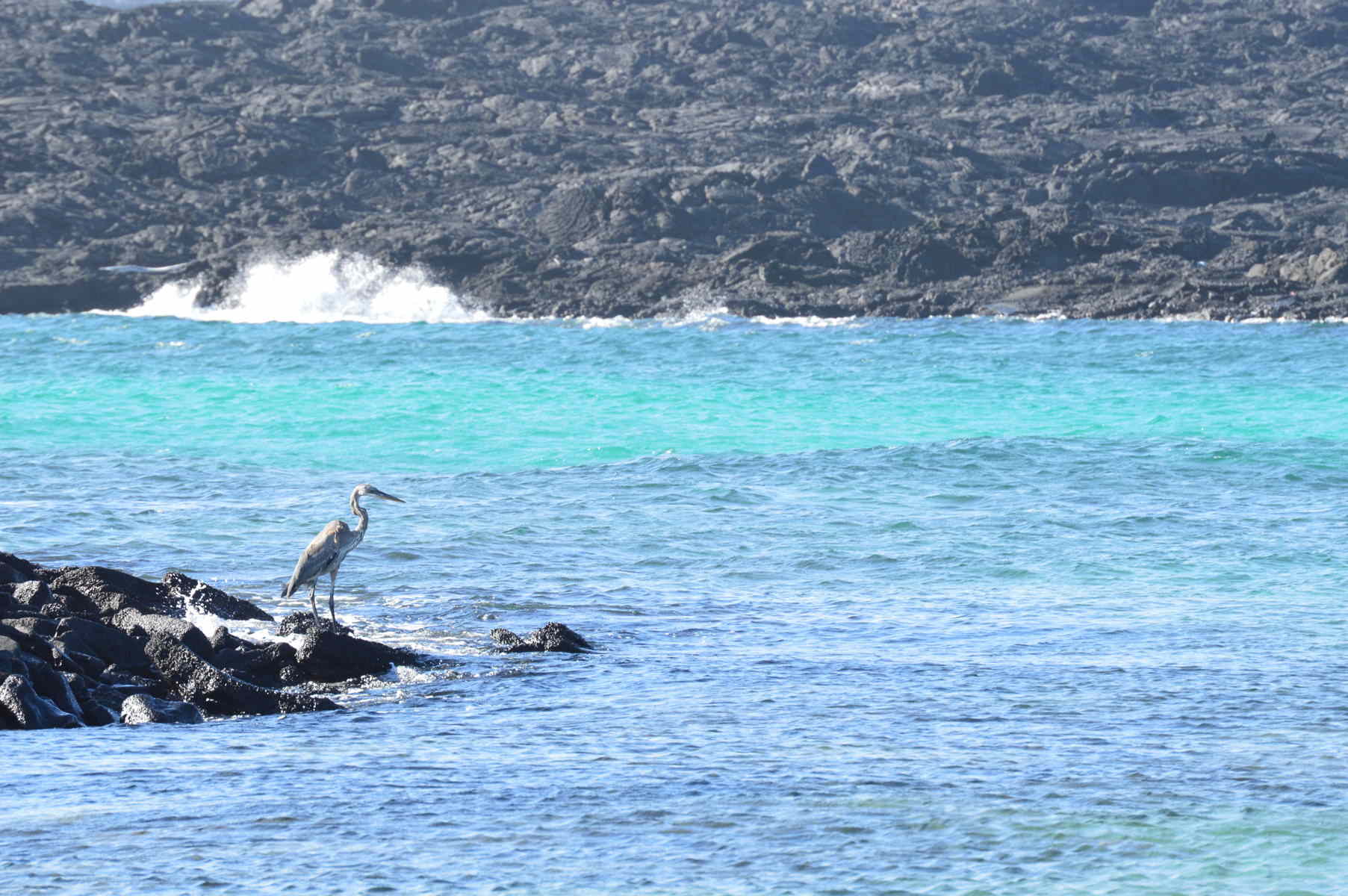
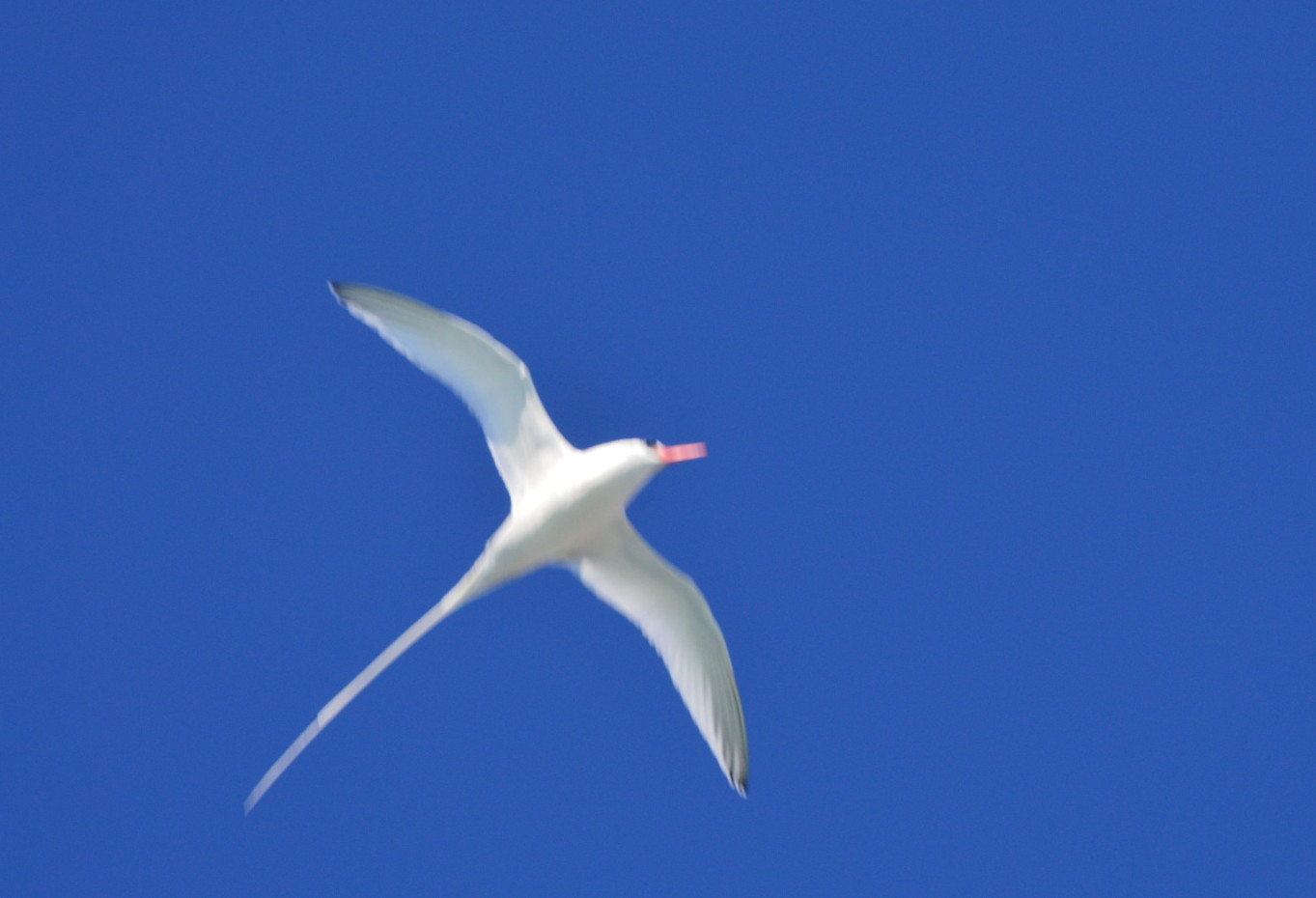 The Galapagos Penguins are tiny relative the ones I saw in Antarctica and are, in fact among the smallest penguins – about 20″ tall and < 6 pounds when fully grown. One swam very fast & directly at my face when I was snorkeling. Startling!
The Galapagos Penguins are tiny relative the ones I saw in Antarctica and are, in fact among the smallest penguins – about 20″ tall and < 6 pounds when fully grown. One swam very fast & directly at my face when I was snorkeling. Startling!
Speaking of snorkeling, here are a couple of underwater shots of a Panamic Cushion Star courtesy of Charlene Underwood. 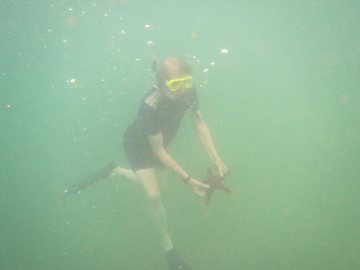

And it seems that there are always a few beach bums hanging out on any island …. 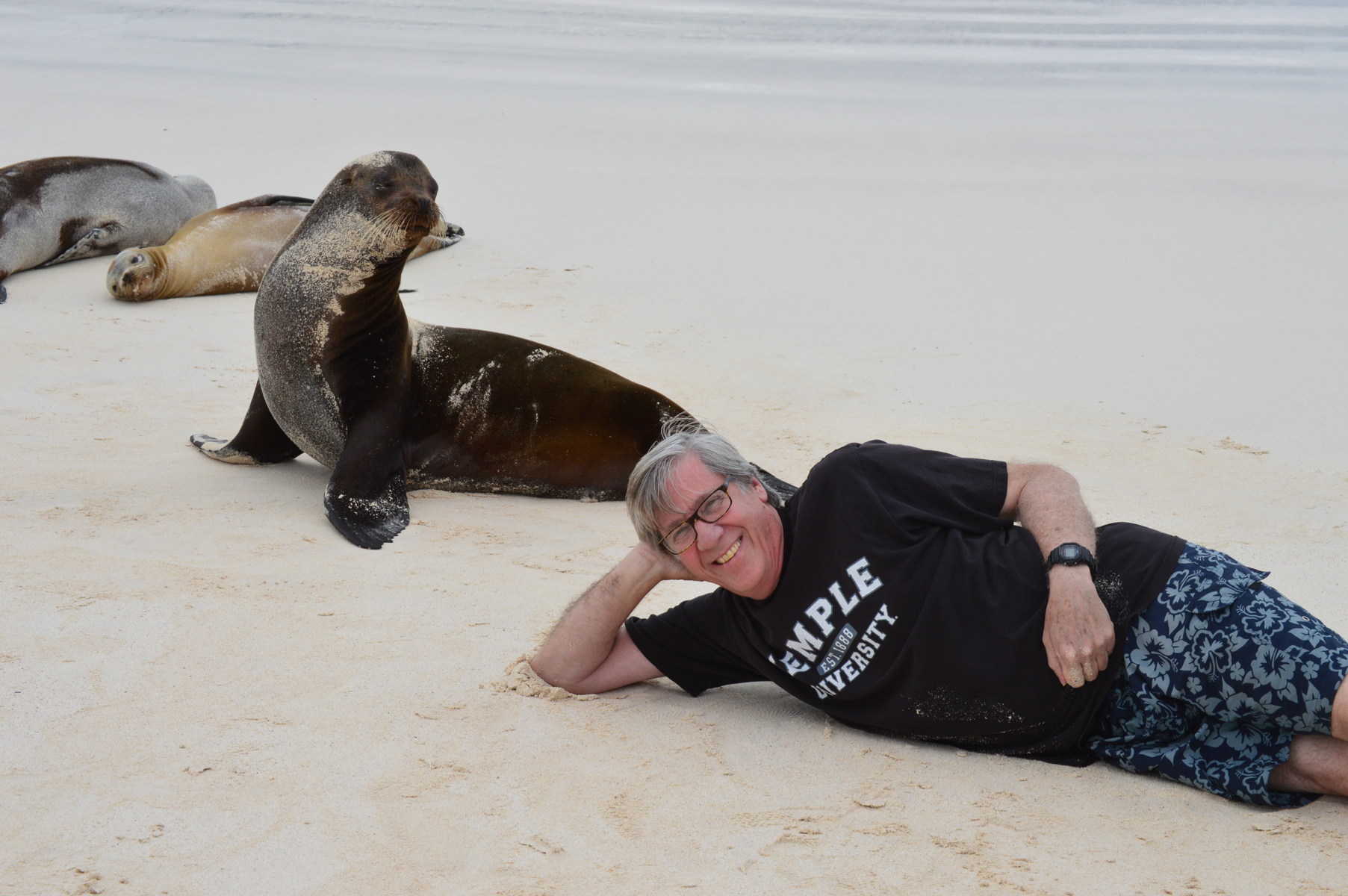
The most common invertebrates we saw were the Sally Lightfoot crabs. The small ones are dark and blend in with the lava rocks, but they get really colorful when they’re larger.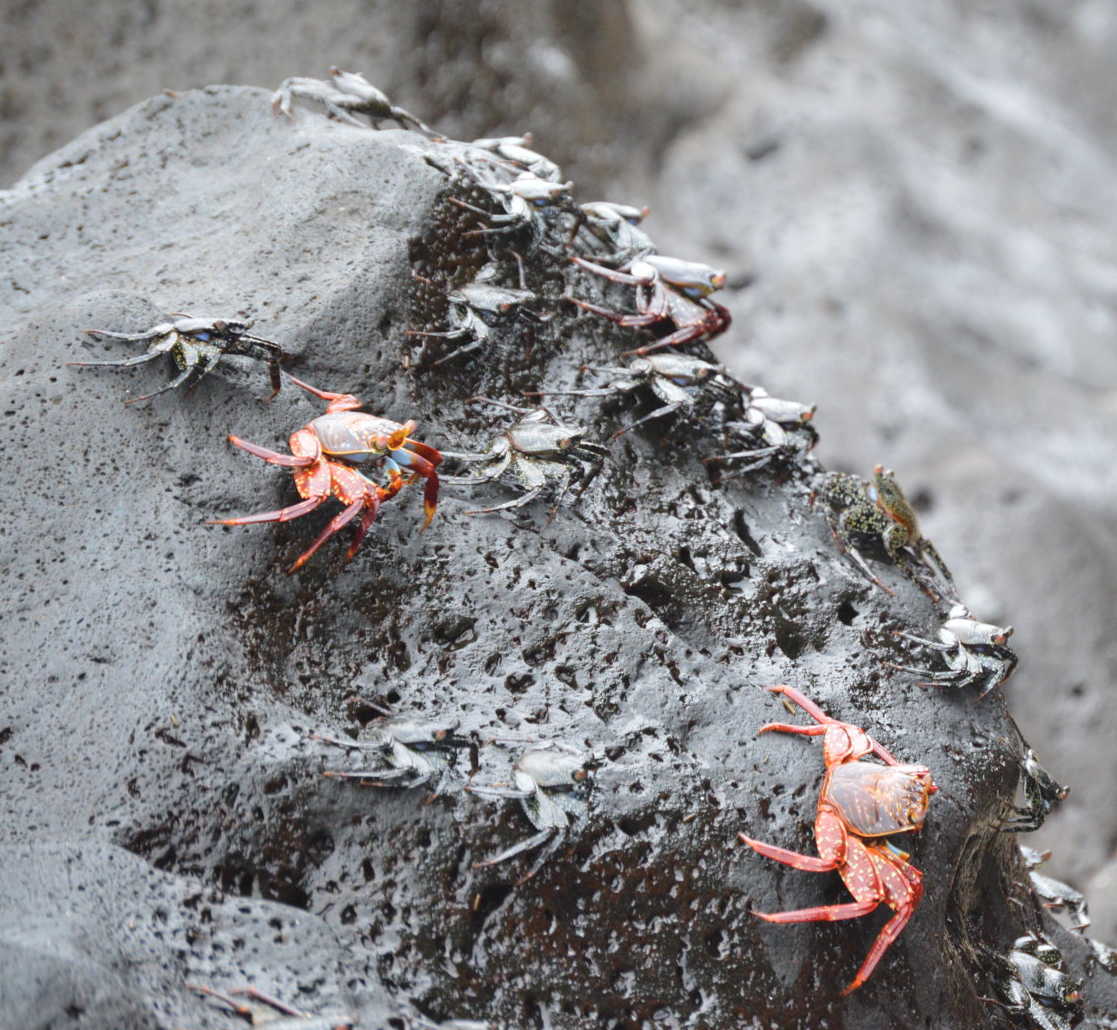
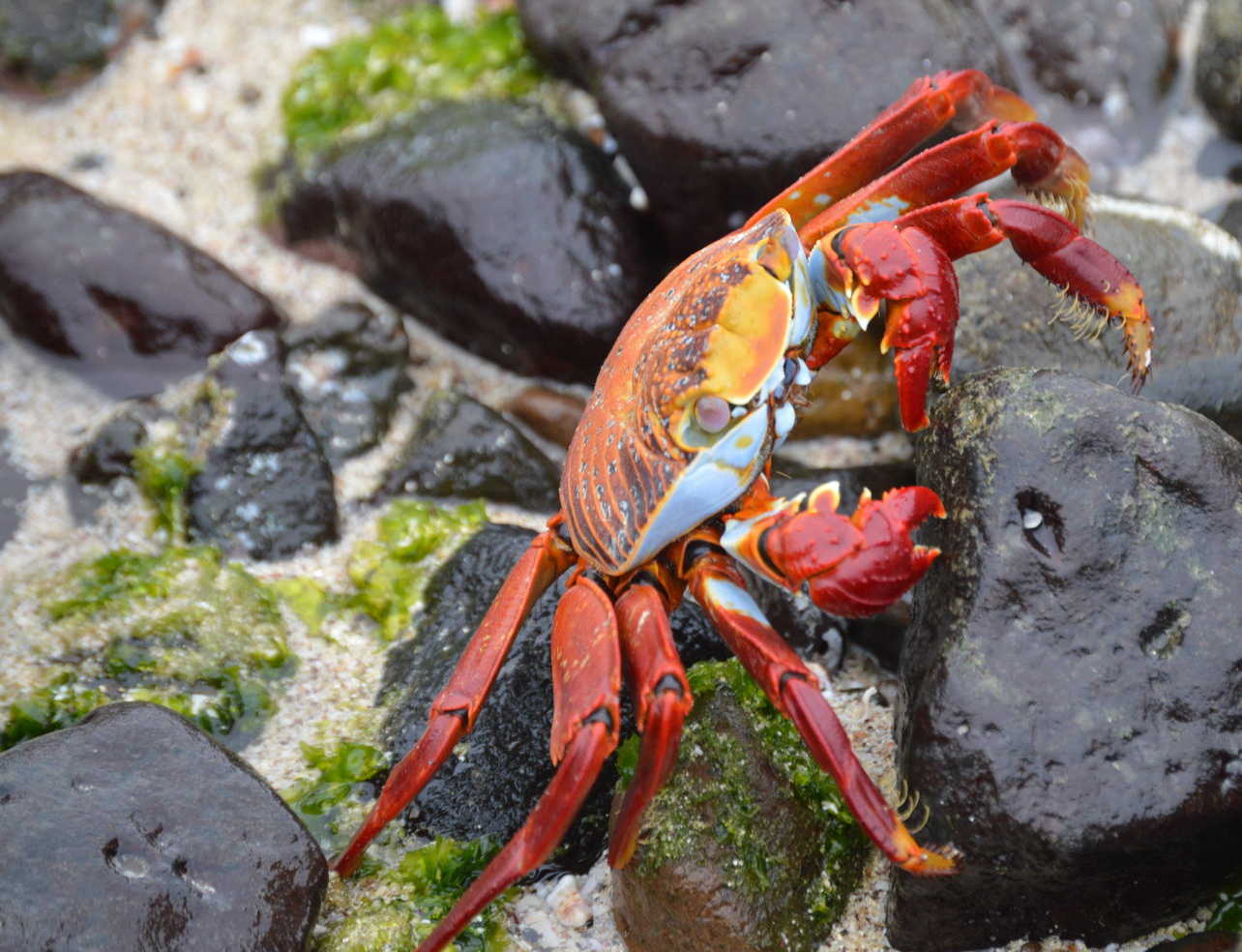
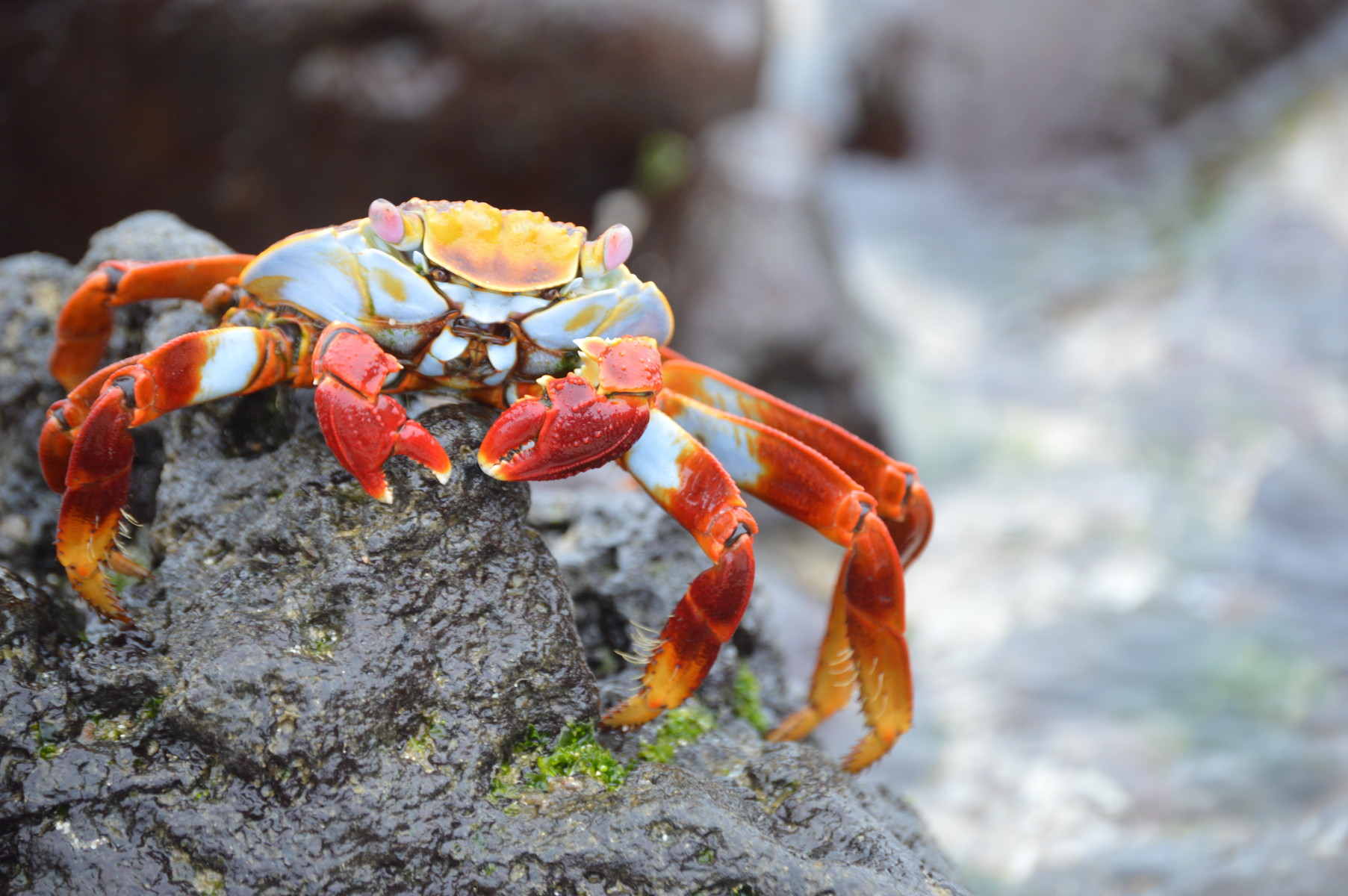
Galapago Islands are amazing and back in colorful Quito, Ecuador (the first picture is from the bus) you can see the Galapago’s influence in some unusual church gargoyles.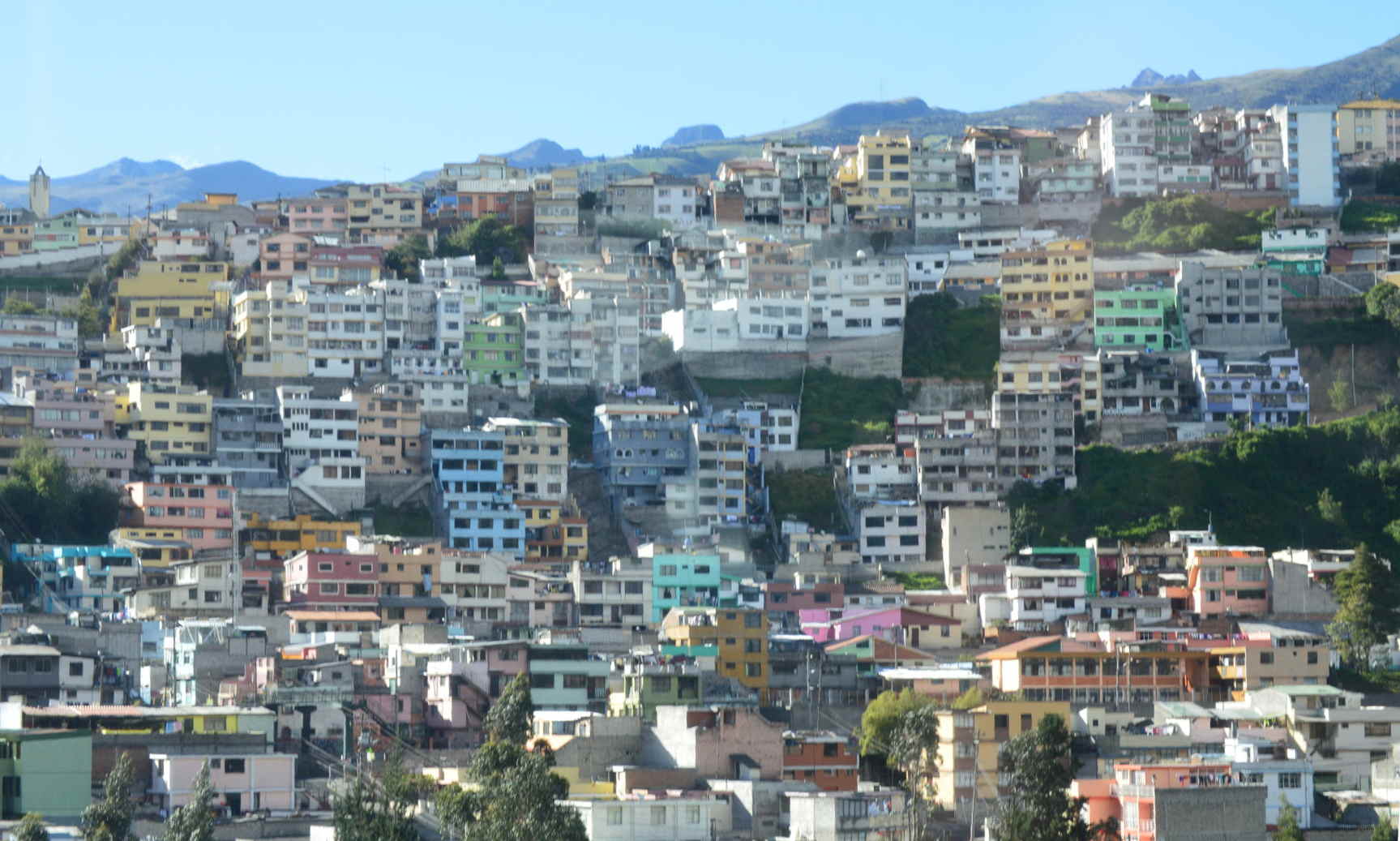
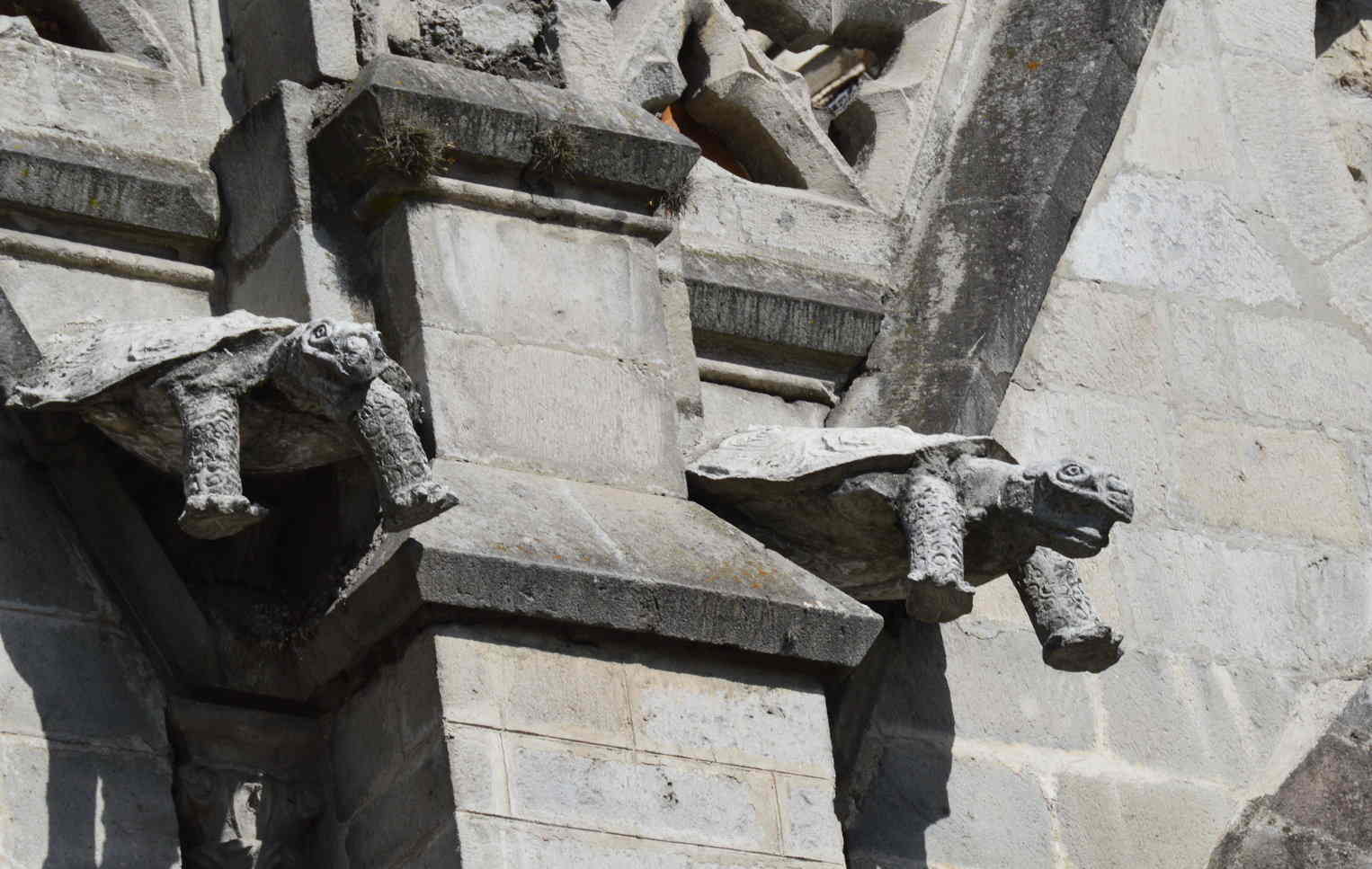
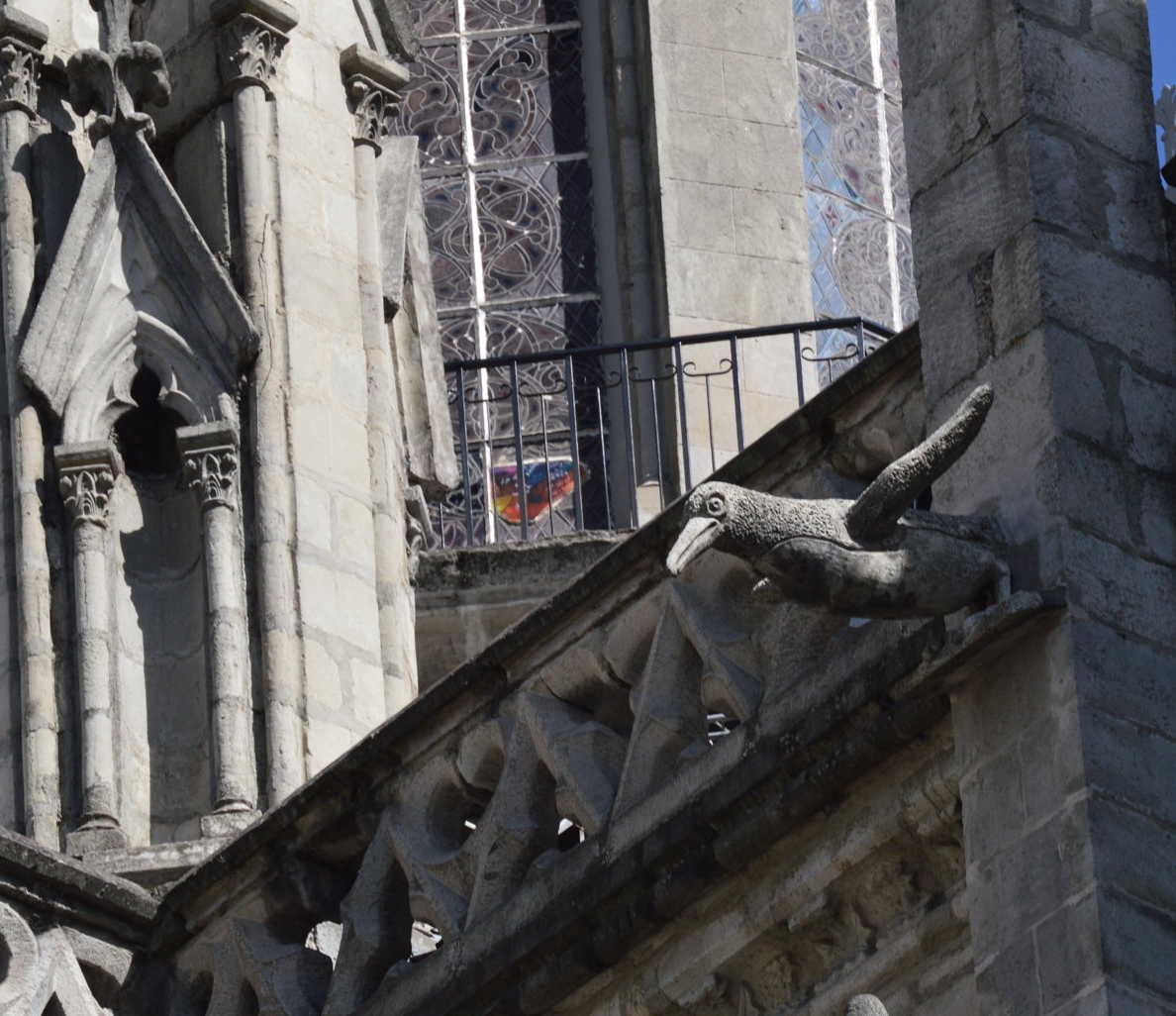
There’s was lots more – an amazing trip that finished with a foot in each hemisphere at the equator near Quito. 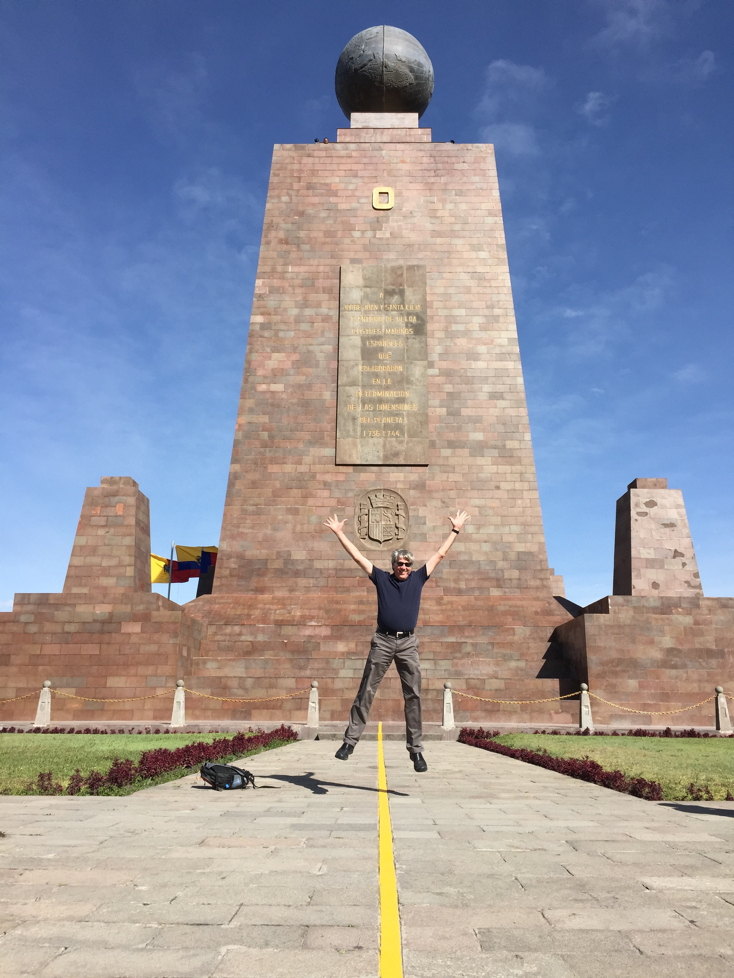 The O is for oeste in español (east in english).
The O is for oeste in español (east in english).
